This post contains affiliate links to products and or services. I may receive a small commission for purchases made through these links, but with no additional costs to you.
Porto, você é linda.
So, you’re heading to Portugal! Perfect. Chances are, your first stop will be the bustling capital city of Lisbon, which is great, but why not head north and discover the attractive city of Porto.
Porto has its origins in a Pre-Roman settlement called Calle or Portus Cale, which is where the name of Porto originated. Records indicate that Porto was founded in 417 and over the centuries, had various rulers among others the Suevi, the Goths and the Moors.
Porto, or Oporto as its known as by locals, is Portugal’s’ second largest city located in the northwestern region of the country alongside the mighty Douro River. Seamlessly mixing culture, charm and ambiance, it’s no wonder that Porto was dubbed the 2001 European Capital of Culture.
Its picturesque streets, historic architecture, delicious food and friendly locals are reasons why Porto feels alive in every sense of the word, both day and night. The old town, centered in the Ribeira District, was built on the hills overlooking the Douro River and today is a UNESCO World Heritage Site and is filled with restaurants and tall, colourful buildings that mimic a real life postcard.



Filled with a mix of Baroque, Gothic and Neoclassical architecture, it’s difficult not to fall in love with Porto’s charm. As you make your way through the streets of Porto, you’ll be greeted around every corner by a beautiful piece of architecture, inviting coffee shops, or ornate blue tiled churches.
The best times to visit Porto are typically from late spring to early autumn, specifically from May to September. The weather in May and September is pleasant and there are far less tourists in the city during shoulder season. In the summer months from June to August, the weather can be blistering hot and the city centre will be absolutely rammed with tourists during this time. Not exactly ideal if you like to leisurely stroll around quiet European streets.


I spent 3 days exploring Porto and although I could’ve stayed for much longer, 3 days was absolutely perfect to see all of the attractions and to get all of my steps in. 😉
If you’re heading to Portugal this year, here is how you should spend 72 hours in Porto.
How To Get To Porto
There are numerous ways to get to Porto anytime of the year. If arriving by plane from within Europe, you’ll fly into Francisco Sá Carneiro Airport, which welcomes arrivals from loads of European cities. You can also also arrive to Porto by rail (arriving at either Porto’s Campanhã station, or the historic São Bento station) and if you’ve been reading and following my blog, you know that is my favourite method of transportation. Portugal’s national railway system is run by Comboios de Portugal (www.cp.pt), but I will warn you, the Portuguese Rail employees do go on strike often…like VERY often, so make sure to keep updated on their website, or with their easy to use app. The trains did go on strike while I was there and I actually missed my day trip to the Douro Valley because of it. And yes, I am still bitter about it. 😐 And last, but not least, Porto is easily reached via bus as well as car via the modern motorways.
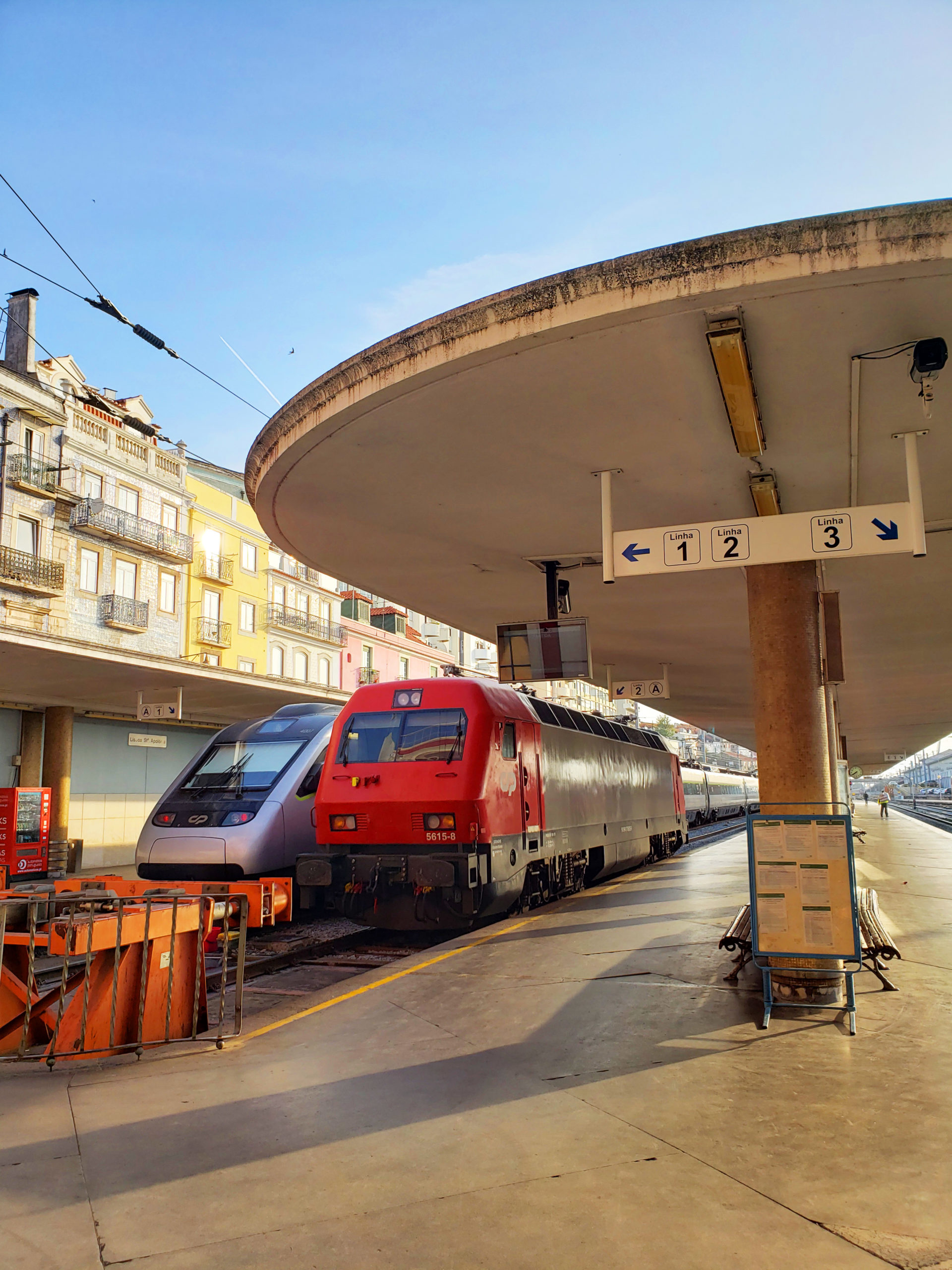

Getting Around Porto
Making your way around Porto is fairly easy, albeit all the steep stairs and hills, of course. Don’t let the hill climbs scare you though, everything you need to see is in close proximity within the city centre. Porto is home to a very integrated and well thought out transportation system. Buses, trains, taxis (both land and water ones), subway and even old school trams, make it certain that you will have no issues getting around Porto. You can even take a cable car…more on the later.


Explore The City On Foot
Porto is a very compact city, making it very easy and enjoyable to walk through. Avoid the peak time congestion that fills the narrow streets and hit the streets on foot. Walking around a city is by far the best way to get a glimpse into all the nooks and crannies of a new city. A word of warning though, pack some comfortable walking shoes and leave the heels at home, ladies. With steep stairways and streets filled with uneven cobblestones, you’ll want to prioritize comfort over fashion…at least for a bit.
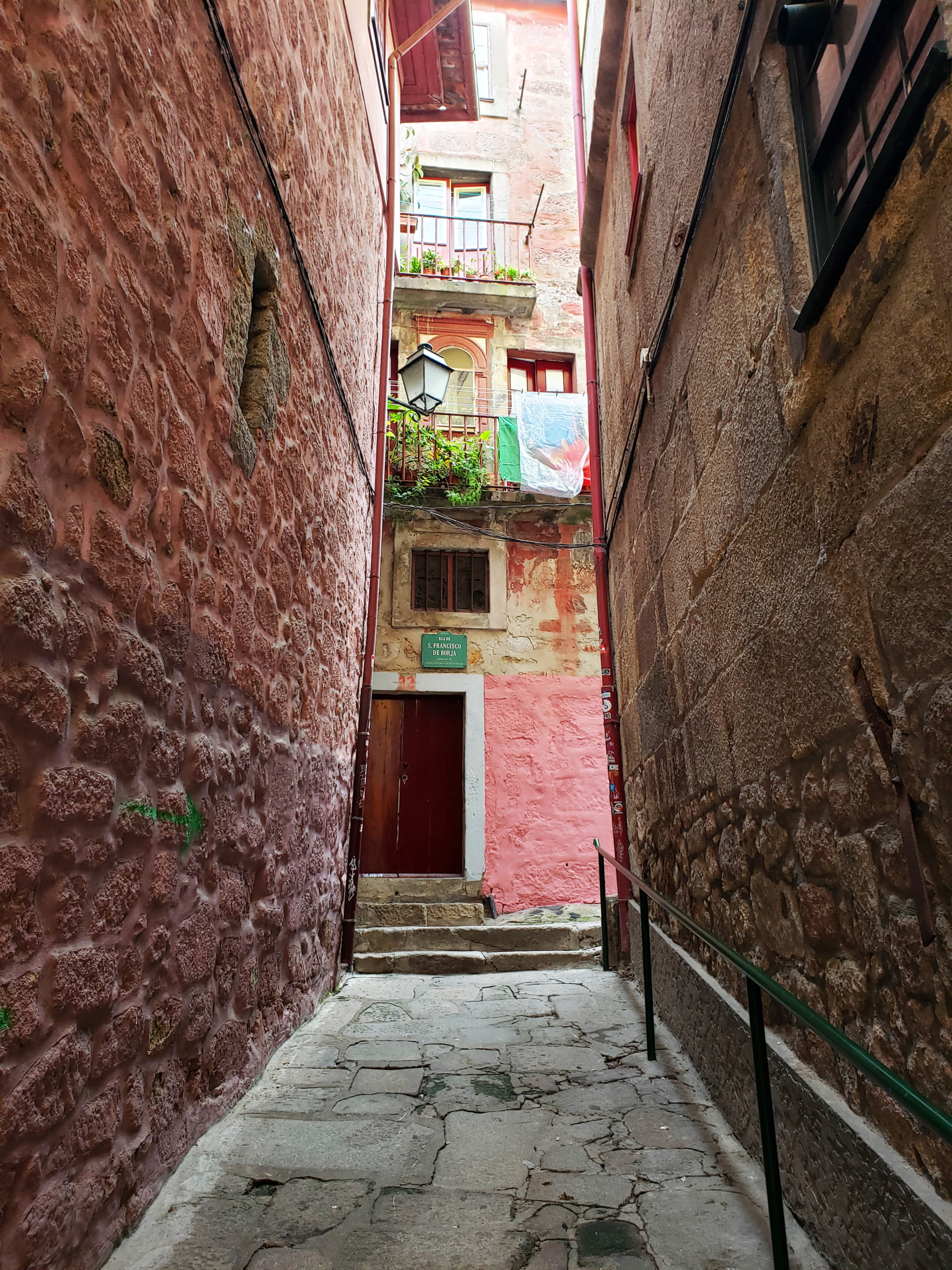
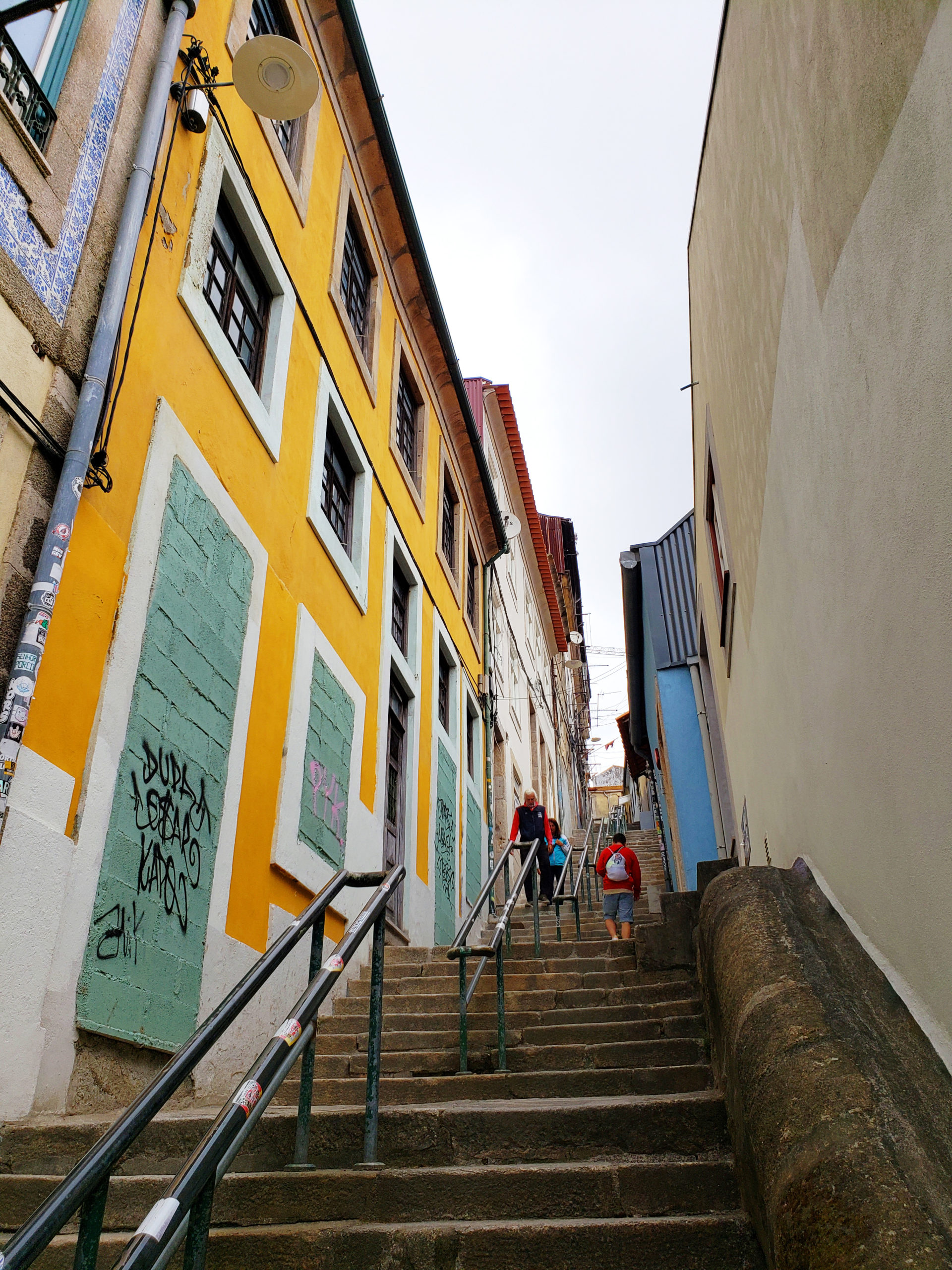


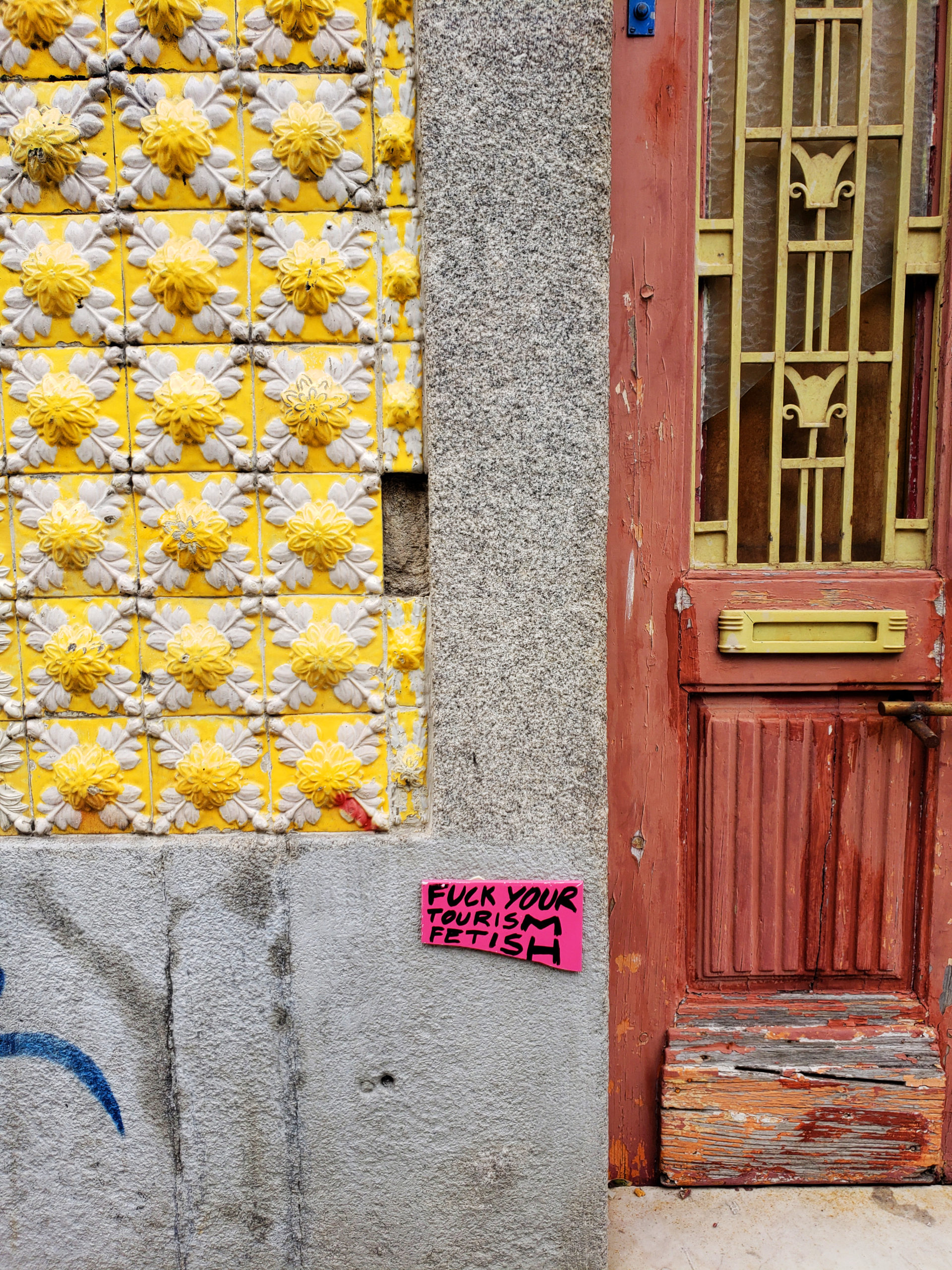

Grab A Porto City Card
What is a Porto City Card, you ask? Let me fill you in. The Porto City Card is the best bang for your buck if you are planning to spend more then 24 hours exploring Porto. At many local attractions, tourists are granted discounted rates just by flashing your Porto City Card. I was graciously gifted the Porto City Card for a duration of 72 hours by the Visit Porto & Northern Portugal Tourism Board and was astounded at the vast amount of attractions, museums and even restaurants that I could receive discounts at. The Porto City Card is available for a duration of 1, 2, 3, or 4 days and all current prices are on the tourism board’s website linked above. You can purchase your card locally at the tourism board offices, or even online, so you are ready to hit the ground running as soon as you get to Porto.

Take A Day Trip To The Douro Valley
From Porto, take a day trip to the enchanting Douro Valley. This area of Portugal is world renowned for its wines, especially Port wine. The Douro Valley’s vast landscapes are home to numerous vineyards that boast emerald green hills dotted with the grape plants that start here then end up on the table sides of many people from across the globe. To get to the Douro Valley, you can arrive by bus, car, boat and even take the historic train route that snakes alongside the sublime landscapes. Take the train to the last stop called Pocinho and take a leisurely afternoon to stroll around and enjoy the scenery before hopping back on the train to Porto in the early evening. If you are a fan of Port wine, the Douro Valley is the best place to sample a few different variations of this super sweet and fairly strong wine.
 Photo Source
Photo Source
 Photo Source
Photo Source
Grab Lunch In The Ribeira District
This colourful area of Porto is an absolute mecca for photographers. The tall colourful merchant style houses tower over people below as they make their way along the river’s edge. On a sunny day, there is no better place to kick back with a cold beer and a few snacks to munch on as you indulge in some top notch people watching and enjoy views to Vila Nova de Gaia on the other side of the river. The Ribeira District is home to many steep streets that wind and twist their way through Porto’s historic area.

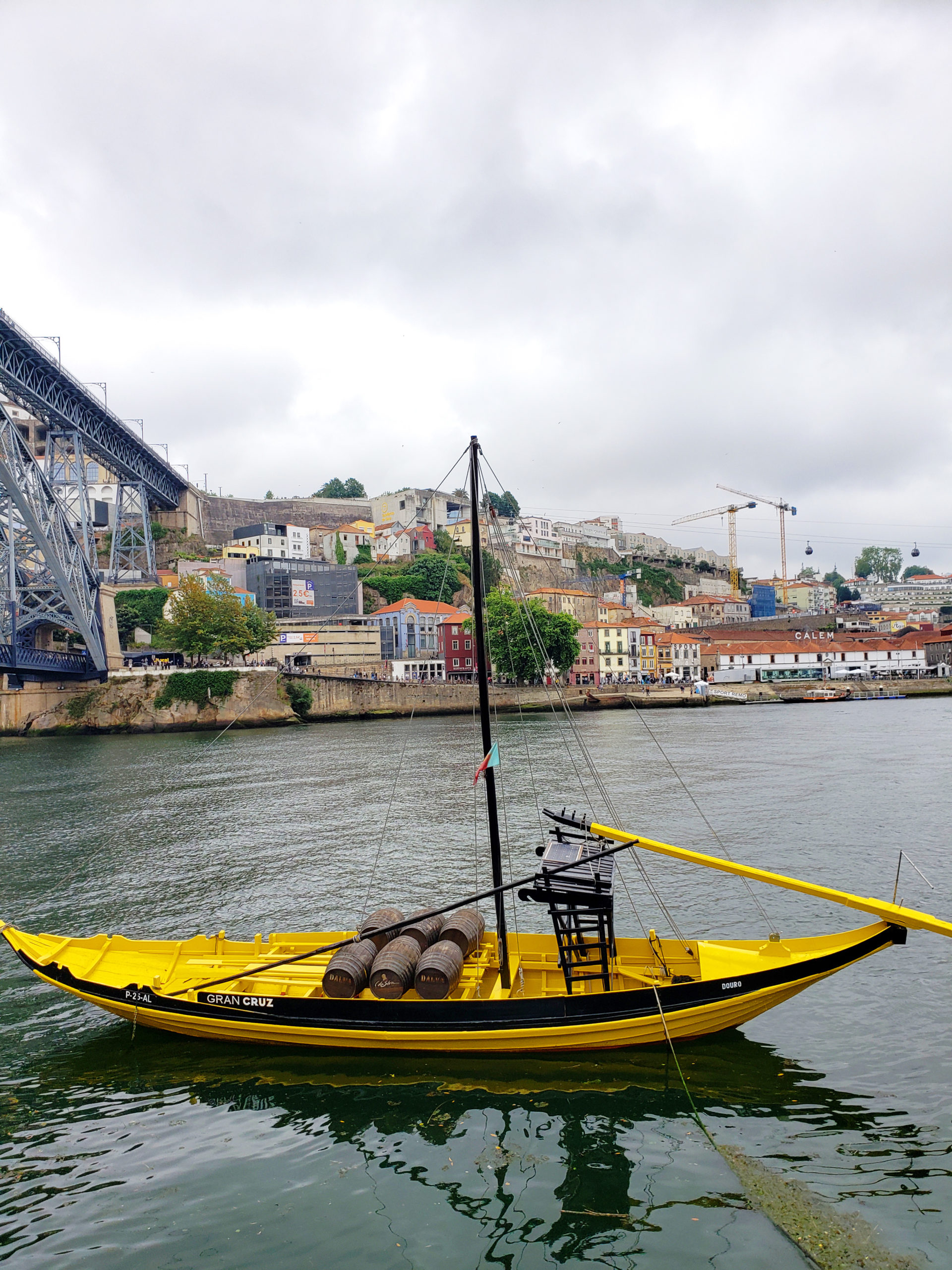
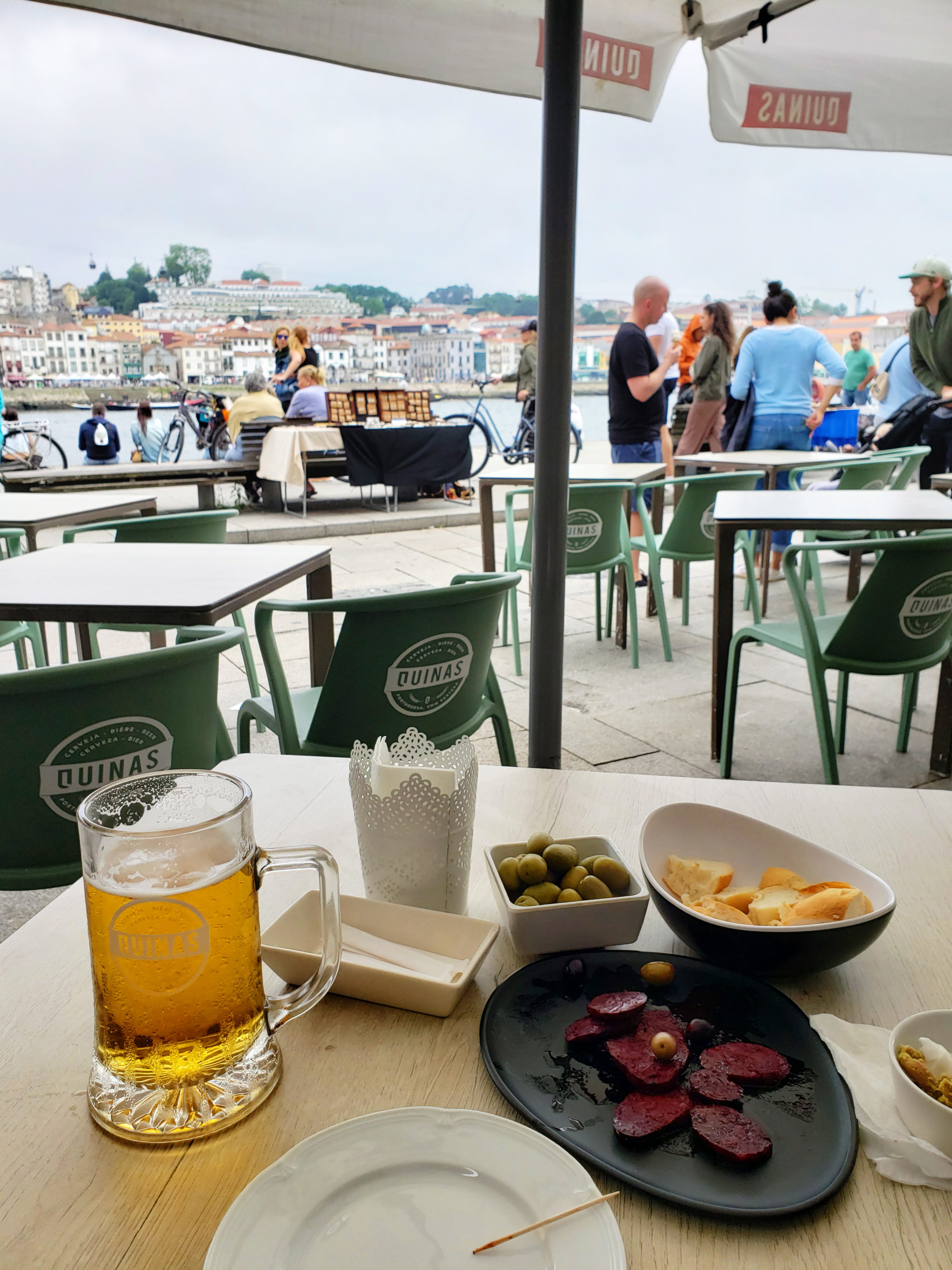
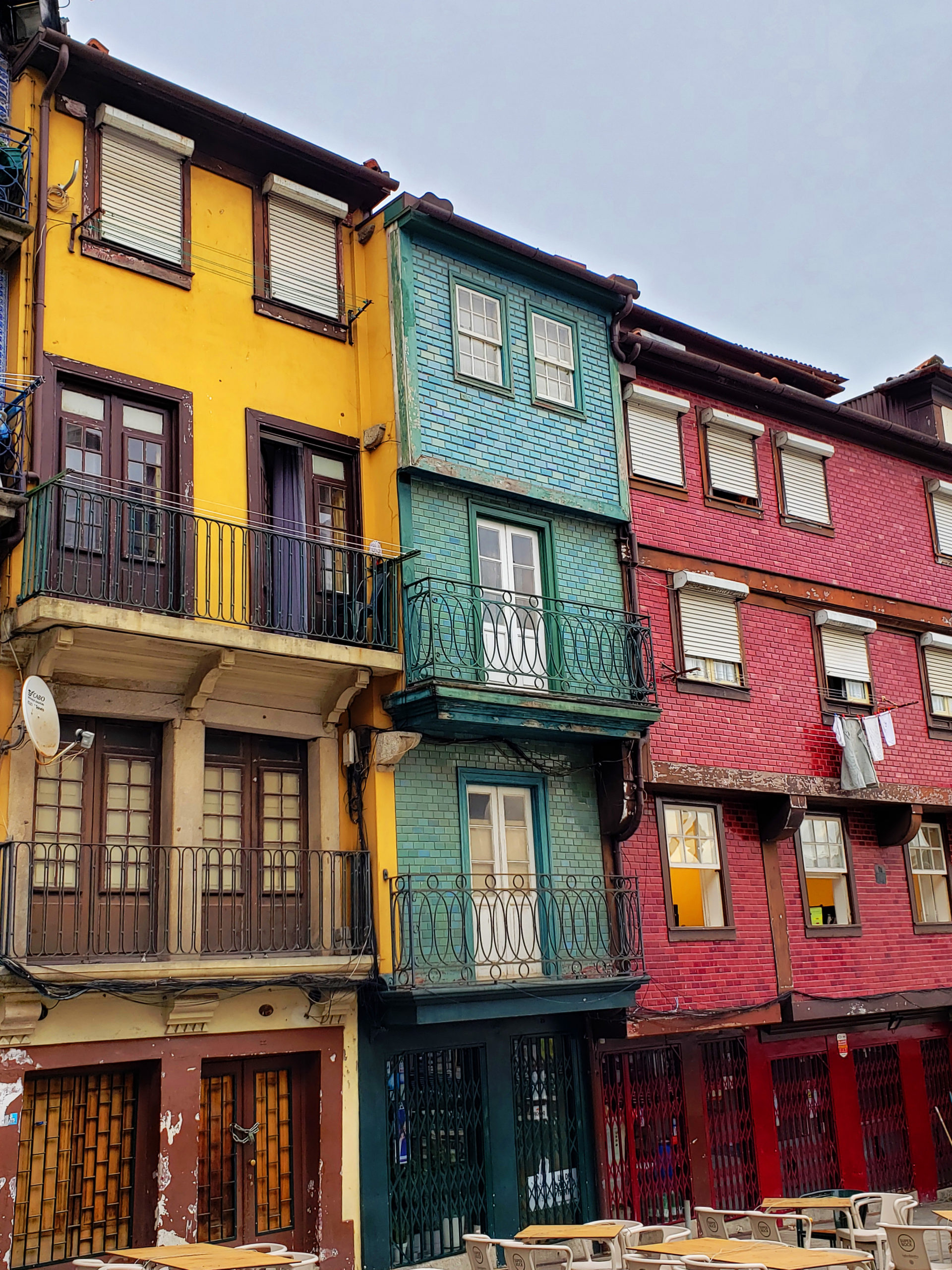
Best Street View In Porto
This hidden gem of Porto is not to be missed. I stumbled on it purely by accident and all I can say is, WOW! What a view. There is a street called Escada dos Guindais, which rewards you with one of the best views in the city and of Ponte de Dom Luis I (Dom Luis the First Bridge) in my opinion. What starts off looking like a narrow street with a few steps, turns into a steep cascading stairway that takes you from the top of Porto’s streets, all the way down to the waterfront complete with epic views all the way down. Surprisingly empty, this stairway, or street, is definitely one of Porto’s best kept secrets. If you want a workout, the journey from the bottom up is most certainly the best leg and glute workout you will ever experience. Trust me!

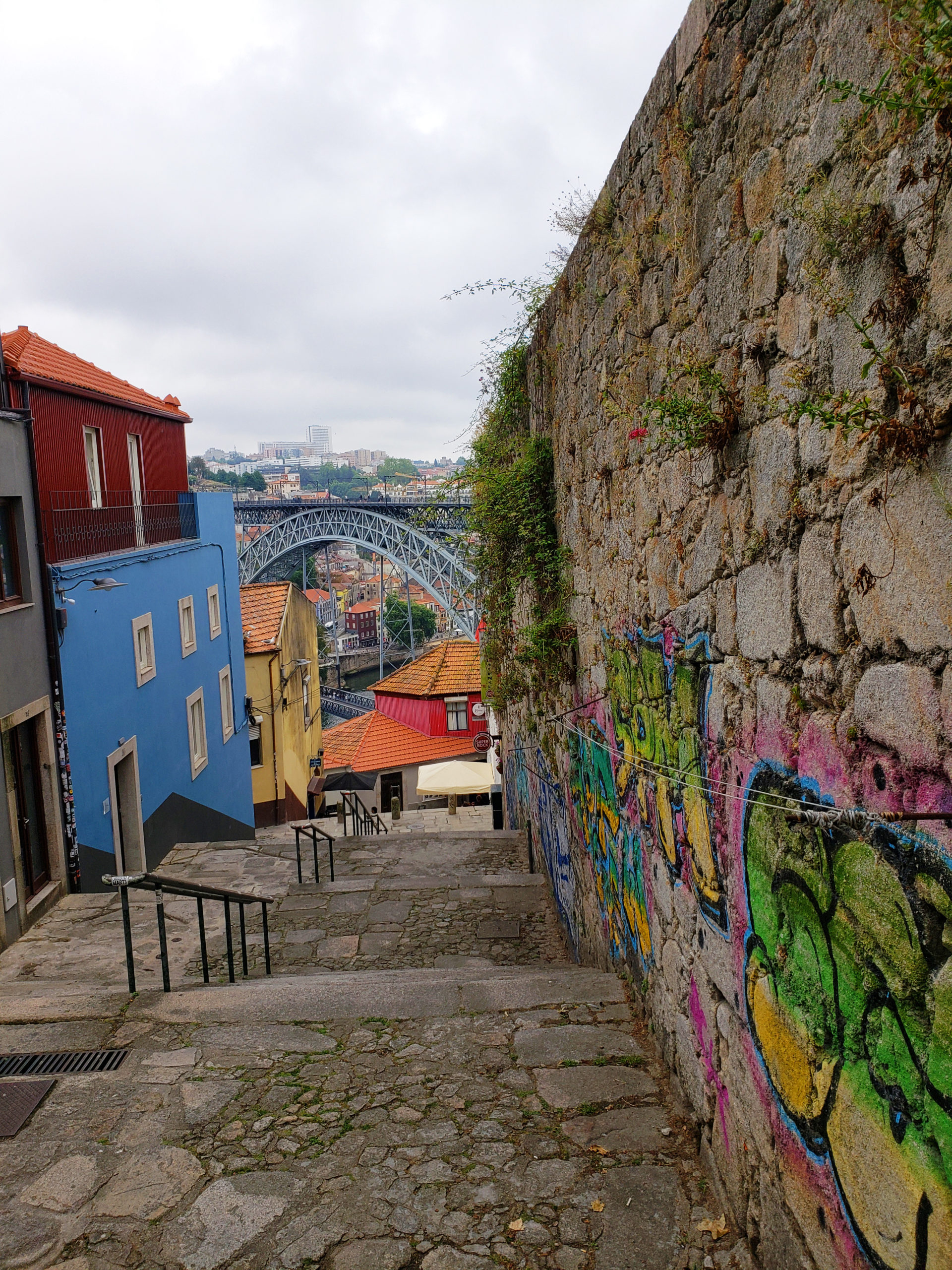
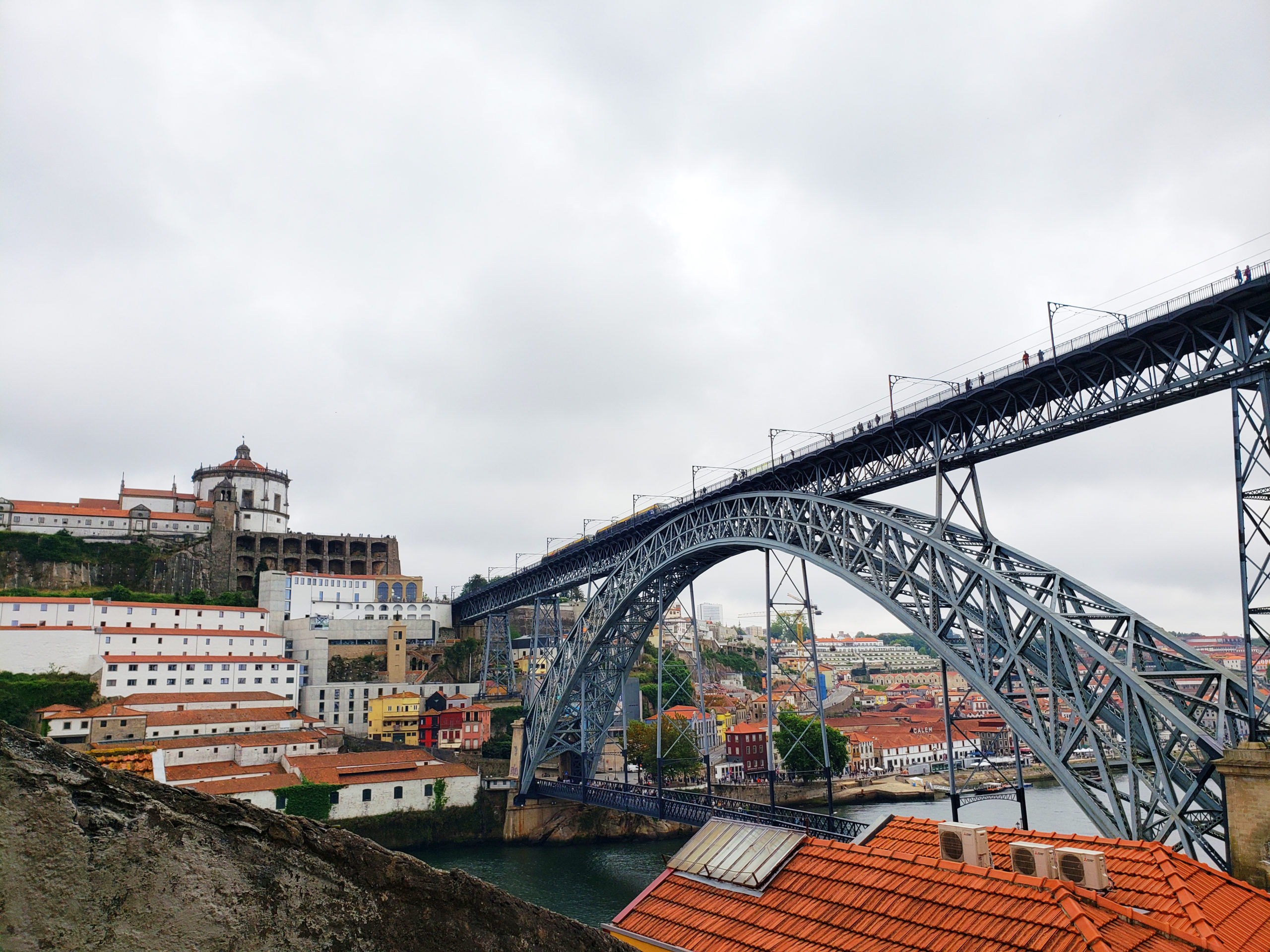
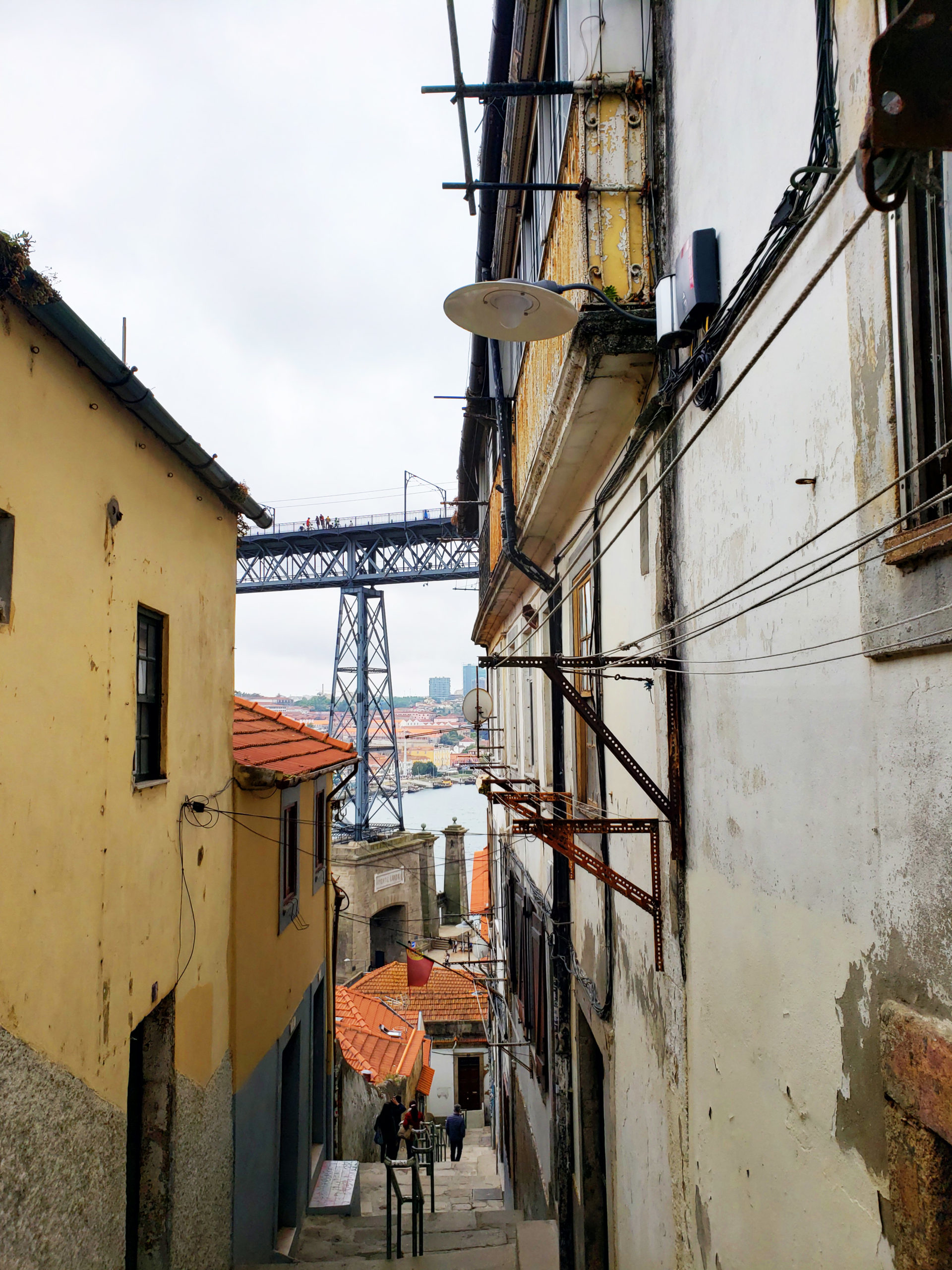
Climb The Torre dos Clérigos
A staple to the cityscape of Porto is the dominating Torre dos Clérigos, which can be seen from every corner of the city. The hilltop church, Igreja dos Clérigos was built in the 18th century by an Italian architect named Nicolau Nasoni and the adjacent tower juts into the skyline of Porto making it one of the city’s most beautiful and recognizable landmarks. Standing at 75 metres (246 feet) high, Torre dos Clérigos is one of the tallest buildings not only in Porto, but in all of Portugal. The dizzying climb up Torre dos Clérigos is a must do while visiting Porto. From the top, you will be rewarded with grand views of the entire city, as well as the Douro River below. The cost at the time of my visit was 6€, however with your trusty Porto City Card, entrance is 50% off!

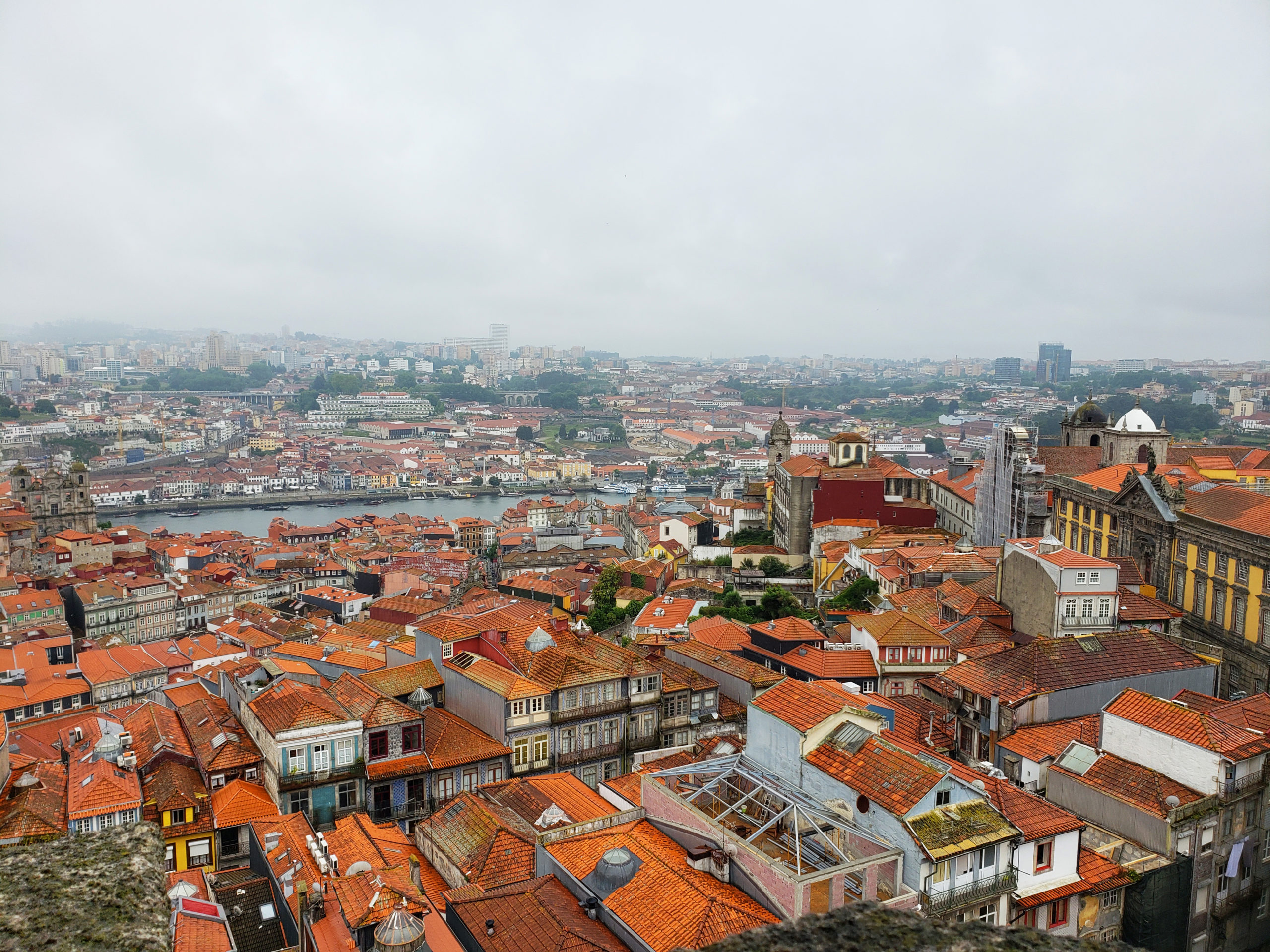
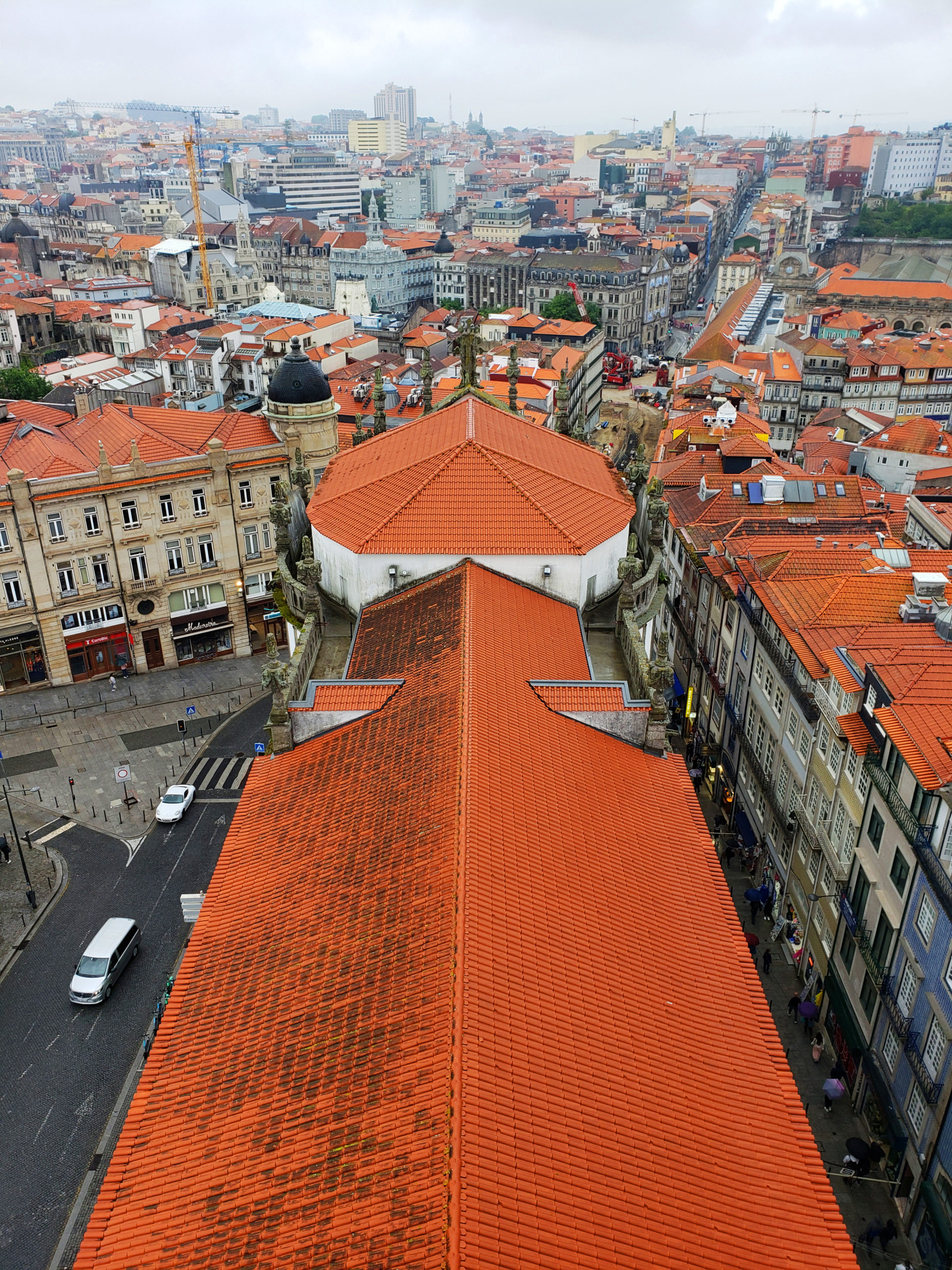
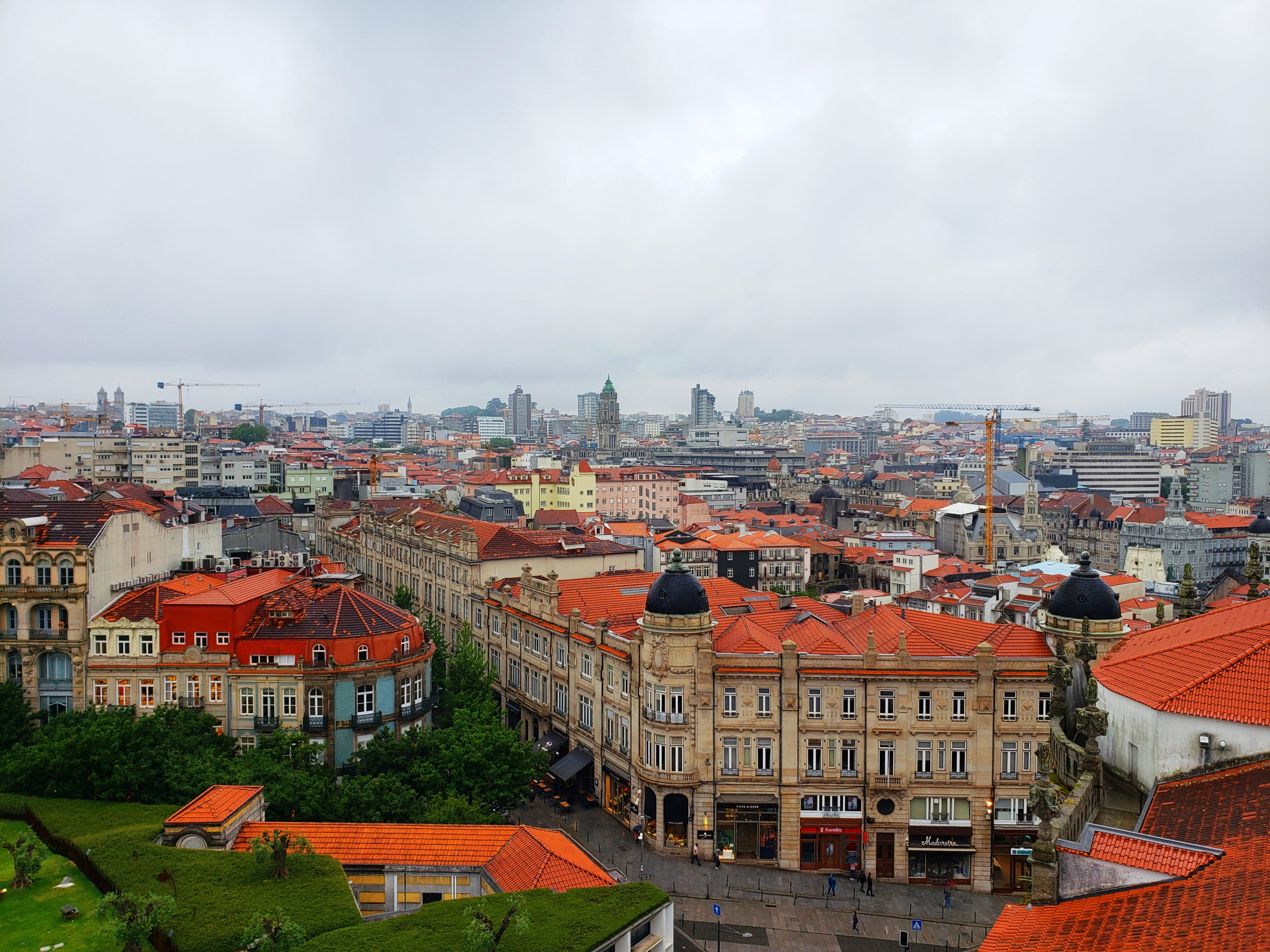
Take A River Cruise
Taking a cruise along the Douro River was one of the activities I wasn’t planning on doing initially, however upon having my train to Douro Valley cancelled due to the impeding strike situation, I opted to head down to the river’s edge and hop on a boat tour. I decided to join the 6 Bridges River Tour, which cost me 15€. To be completely honest, I wasn’t really impressed with the tour itself…I actually found it quite boring. To be fair, the bridges are magnificent and seeing them from below offered a unique view, but it wasn’t what I thought it would be. If you are looking for a laid-back activity to do, then maybe this is the tour for you, but I feel like if I spent a bit more money, I could’ve taken a longer, more exciting boat cruise into the Douro Valley area.

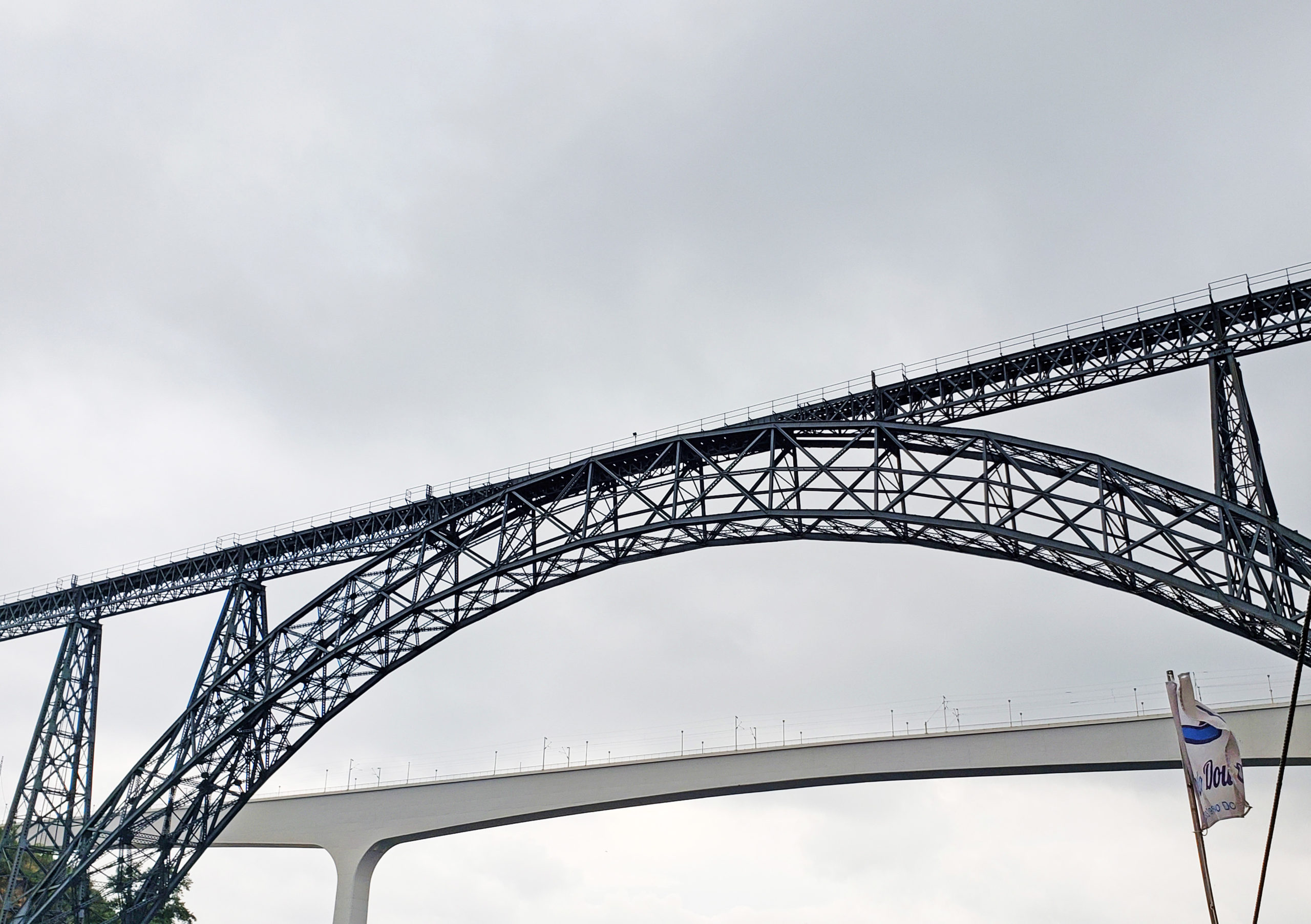

Ponte de Dom Luís I
This double deck metal arch bridge is one of, if not the star of Porto’s skyline. Acting as a major cross way from Ribeira to Vila Nova de Gaia, the Dom Luis I bridge is one of the most iconic bridges within Europe. Constructed in 1866, it was designed by Theophile Seyrig, who was a business partner of Gustave Eiffel and just taking one look at the bridge, you can certainly see the similarities in design. Before the bridge was built, people used to tie boats together to cross the Douro River. On the bottom portion of the bridge, pedestrians are able to cross the bridge, as well as cars, whereas on the top tier, pedestrians can also cross, but only a tram route crosses as a mode of public transit. From the top tier, the views of Porto and Vila Nova de Gaia are nothing short of extraordinary, but when it’s windy, it can be quite daunting as the height alone is enough to make your knees wobble.
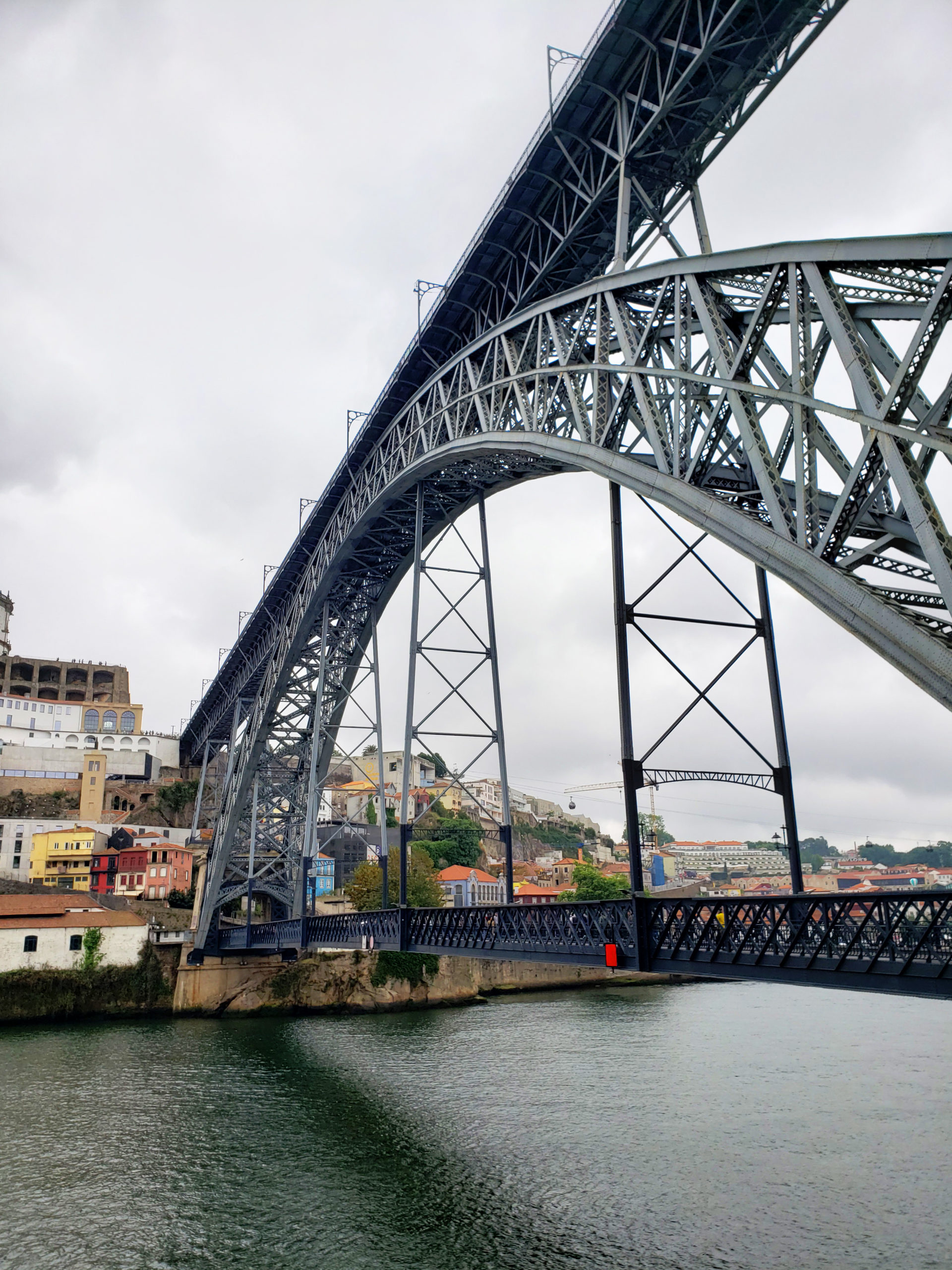




Explore Vila Nova de Gaia
Despite the close proximity to Porto, Vila Nova de Gaia, or Gaia as referred to mostly by locals, is actually a separate city. It is here that you’ll find all of the Port wine cellars lining the Douro River and the best place to photograph Porto’s Ribeira. Gaia enjoys ideal climate and an ideal place to age wine, that is why merchants decided to settle and have the cellars built there around 1710 . If you want to experience a more local side of life and escape the tourists, then wandering around the small narrow streets of Gaia is for you. Although you will undoubtedly find tourist filled spots on this side of the river, if you venture slightly away from the waterfront, you will find hidden local gems that also have cheaper prices. Spending an early morning walking through the streets of Gaia as the cawing of the seagulls fills the air, is something you need to experience.

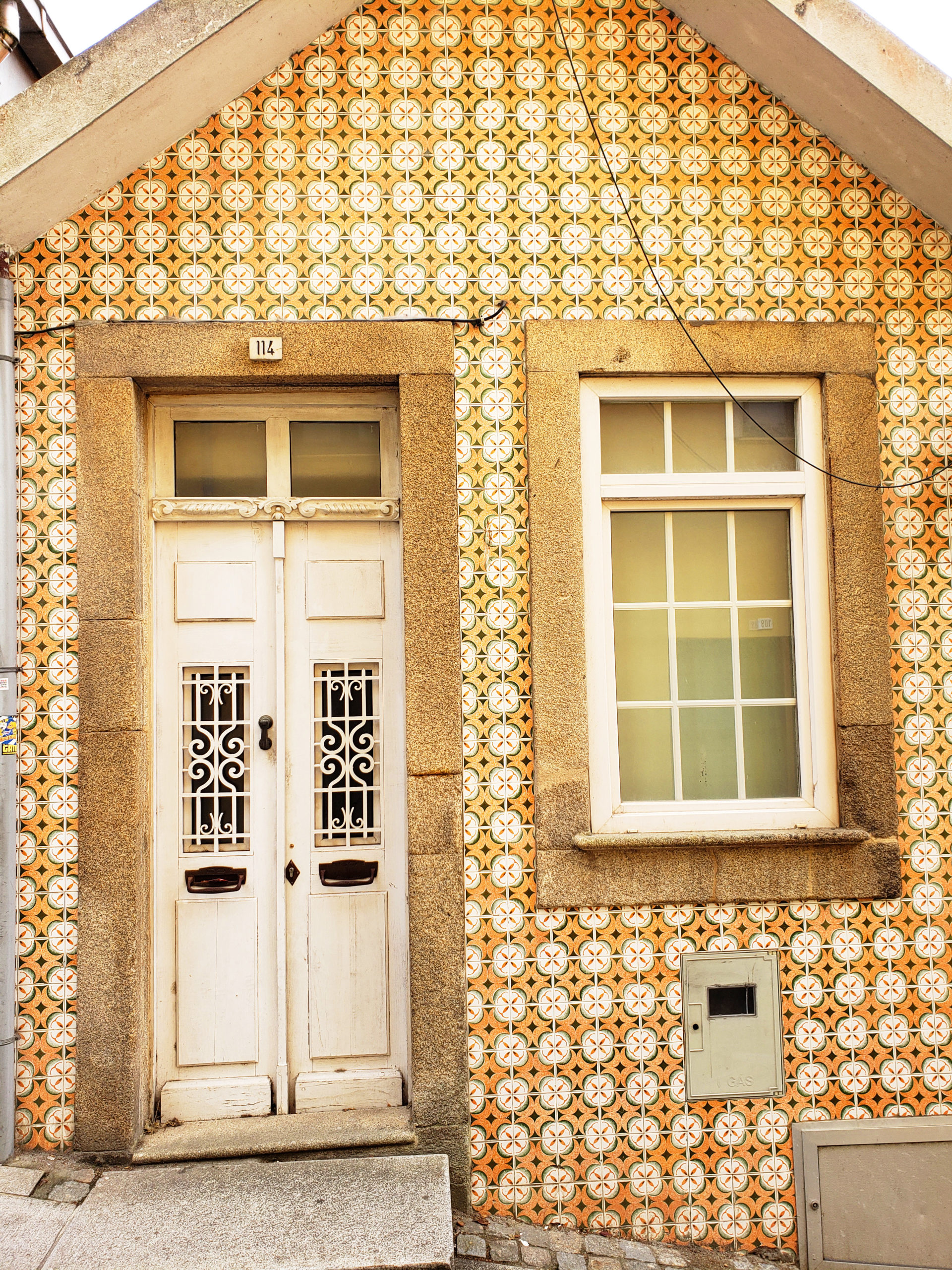
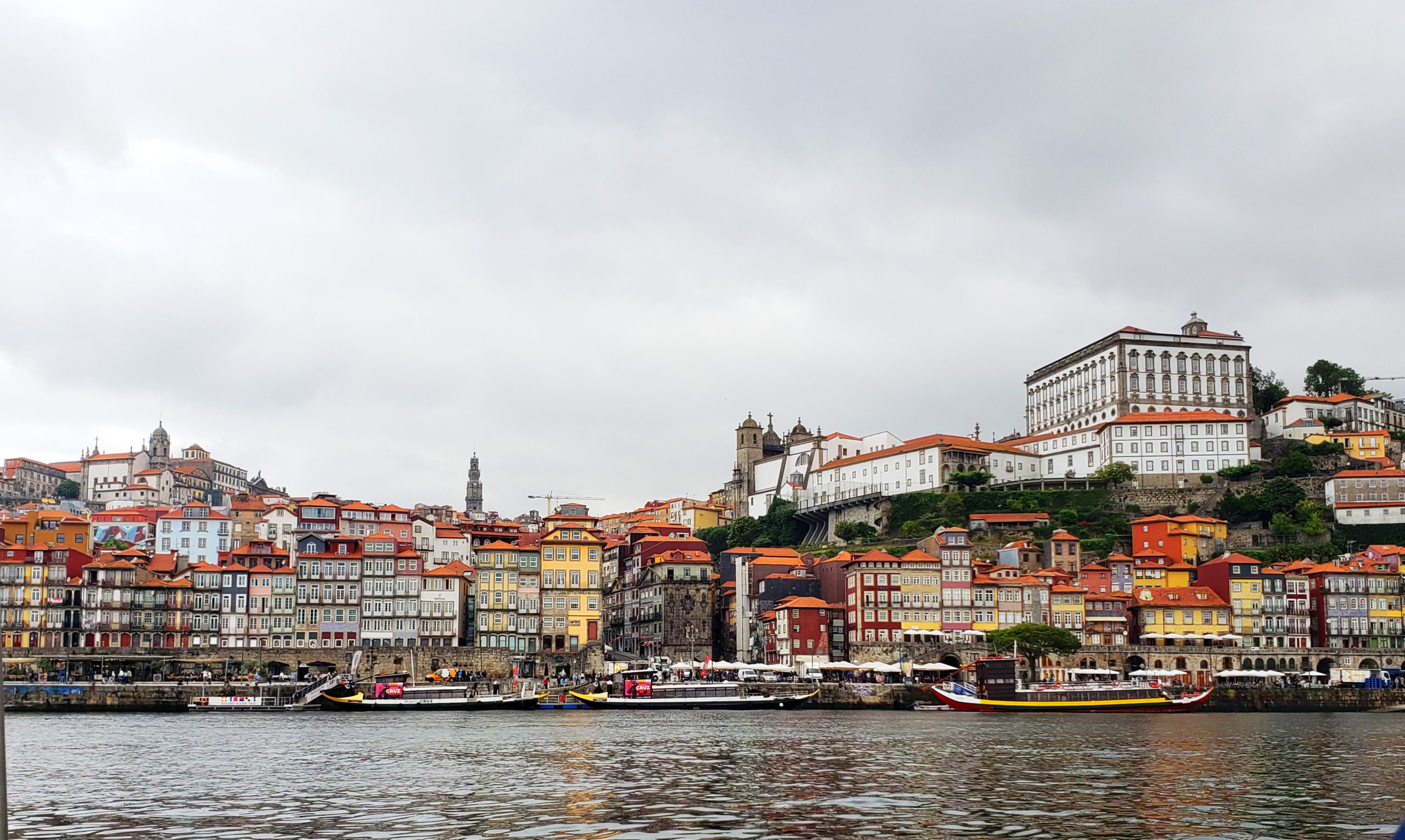
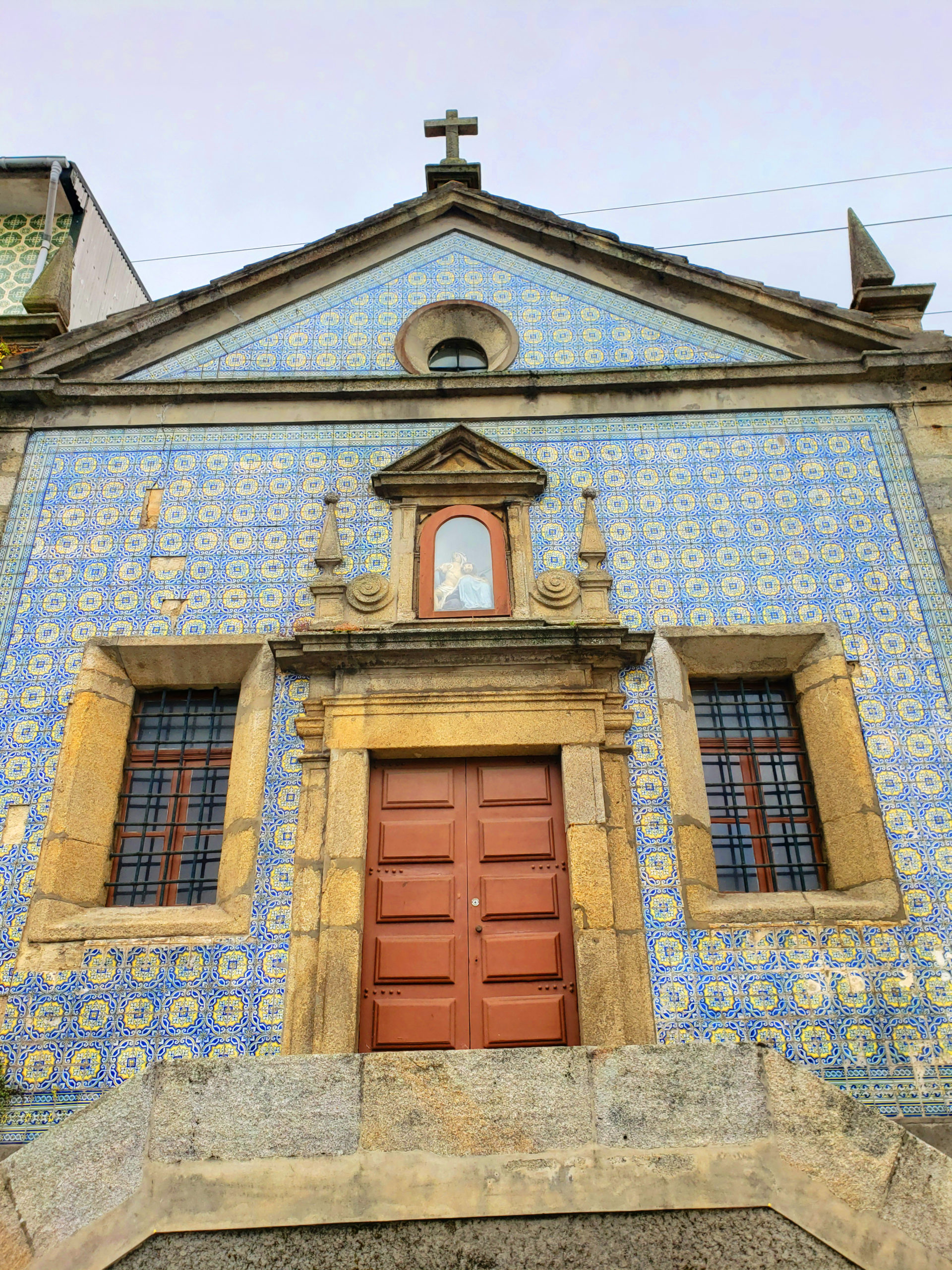
Try Port Wine
Whether it be a white, ruby, or aged tawny, if you are visiting Porto, you must try Port wine. In order for a Port to legally be called a Port, it must be produced in the Duoro region of Portugal. The wine had to endure long boat trips to Great Britain; therefore sweetening elements, such as fruits, herbs, flowers, leaves and brandy were added to it before it aged in the cellars of Gaia. Port wine is typically richer, sweeter, heavier and higher in alcohol content than unfortified wines. This is caused by the addition of distilled grape spirits that fortify the wine, but also halt fermentation before all the sugar is converted to alcohol, which results in a wine that is usually 19% to 20% alcohol. All along the Douro River you will see a specific style boat. Rabelos, a type of boat traditionally used to transport barrels of port down the Douro River for storage and aging in caves at Vila Nova de Gaia near Porto. As a non wine drinker, I still had to try some Port. I can confidently say, it is not for me. Sorry, Port wine lovers. 😉


Watch The Sunset At Jardim do Morro
On a clear night, watching a sunset from Jardim do Morro is an absolute must. Located high above the city on the Vila Nova de Gaia side, you will be in for a treat with a gorgeous view of Porto. The best way to reach the area is by crossing the top of the Dom Luis I Bridge, or from the lower level of Gaia, you can hop on the Teleférico de Gaia, or the Gaia Cable Car, which will whisk you right up to the garden area. The pretty green garden space is a popular meeting spot for locals and tourists alike and during a perfect sunset, the area will be jam packed with sunset seekers causally relaxing with a drink in hand.
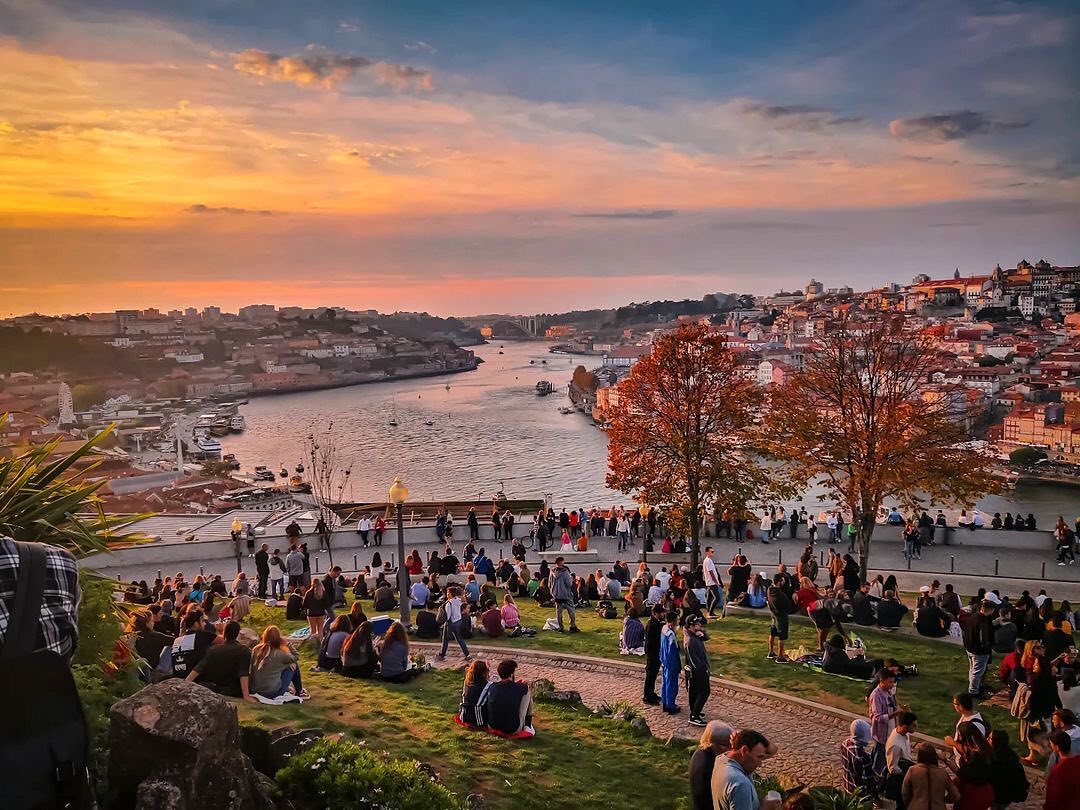 Photo Source
Photo Source
Porto Cathedral
The Porto Cathedral, or locally known simply as Sé, was originally built as a fortress church in the 12th and 13th centuries and has undergone modifications many times over the years. The ornate rose window located in the front of the church, is an original piece of architecture dating from the 13th century. Dubbed a Portuguese National Monument, the Sé is a magnificent piece of architecture that demands your attention as soon as you walk towards it. The Cathedral sits on a square with a massive column in the middle. This is where the criminals of Porto were hanged. The square also offers impressive views over the city, as well as the Douro River below. With a mix of Romanesque, Baroque and Gothic styles of architecture, the Sé also has traditional blue and white azulejos tiles depicting various scenes from Portuguese history.
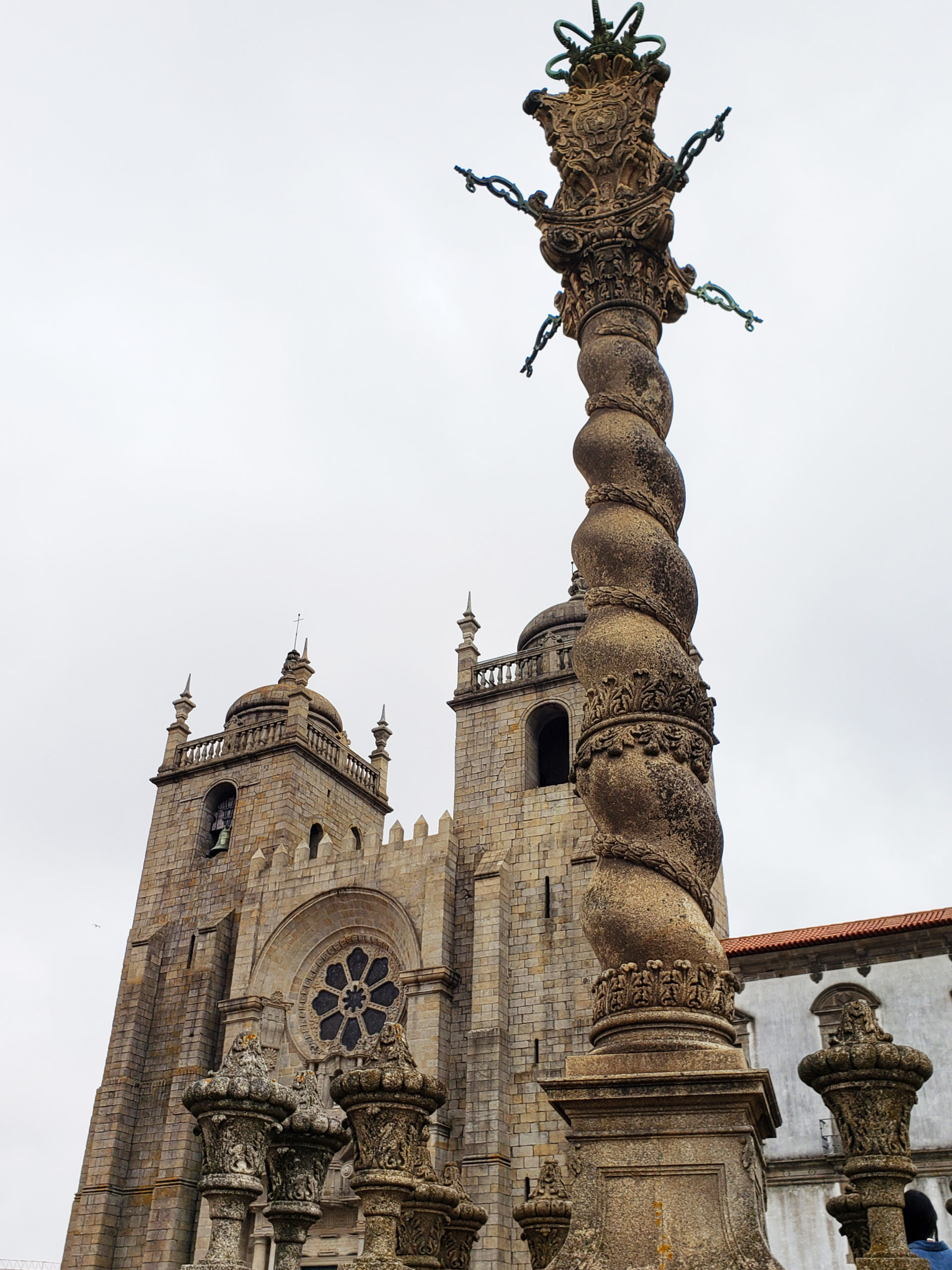



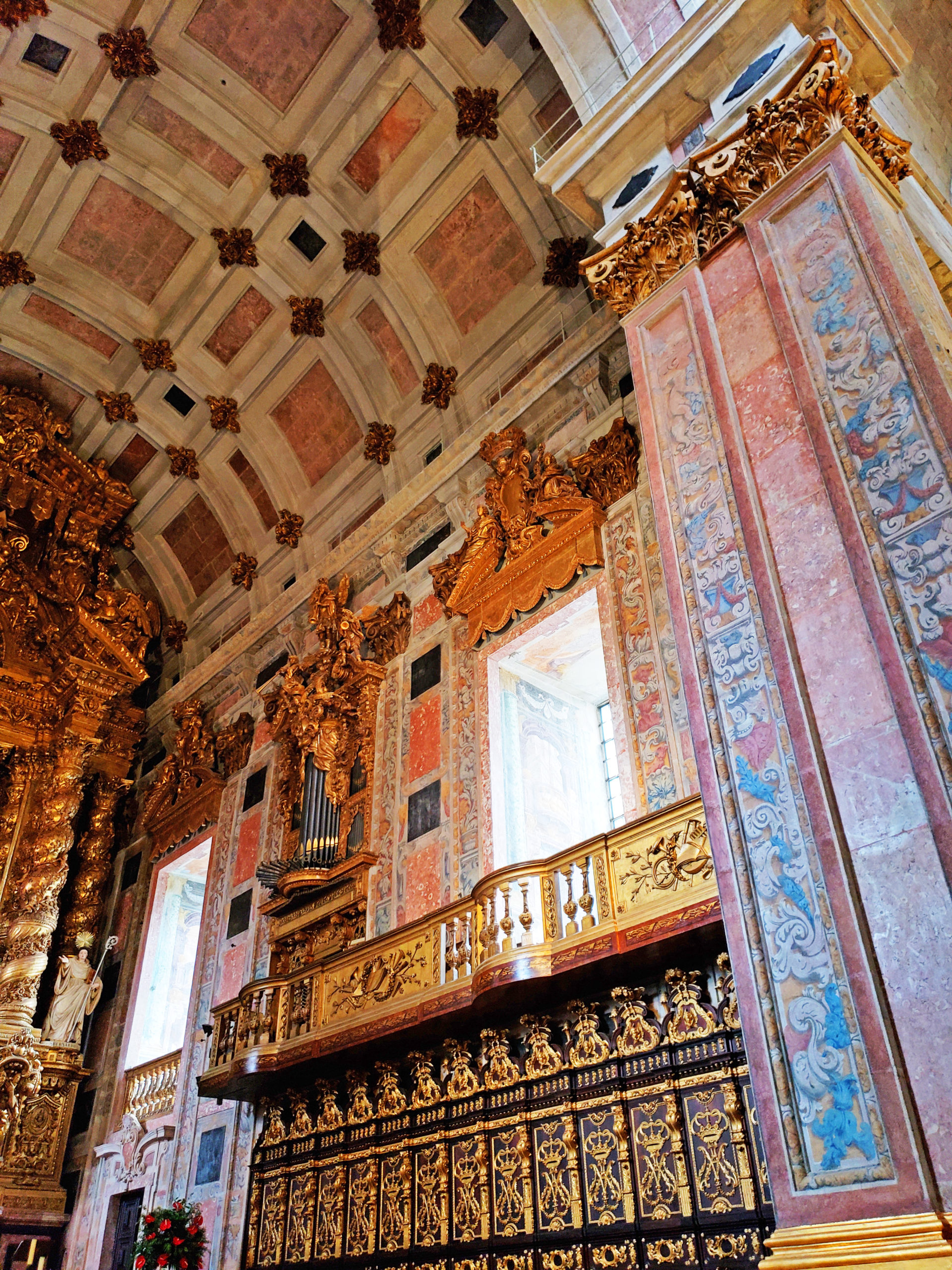
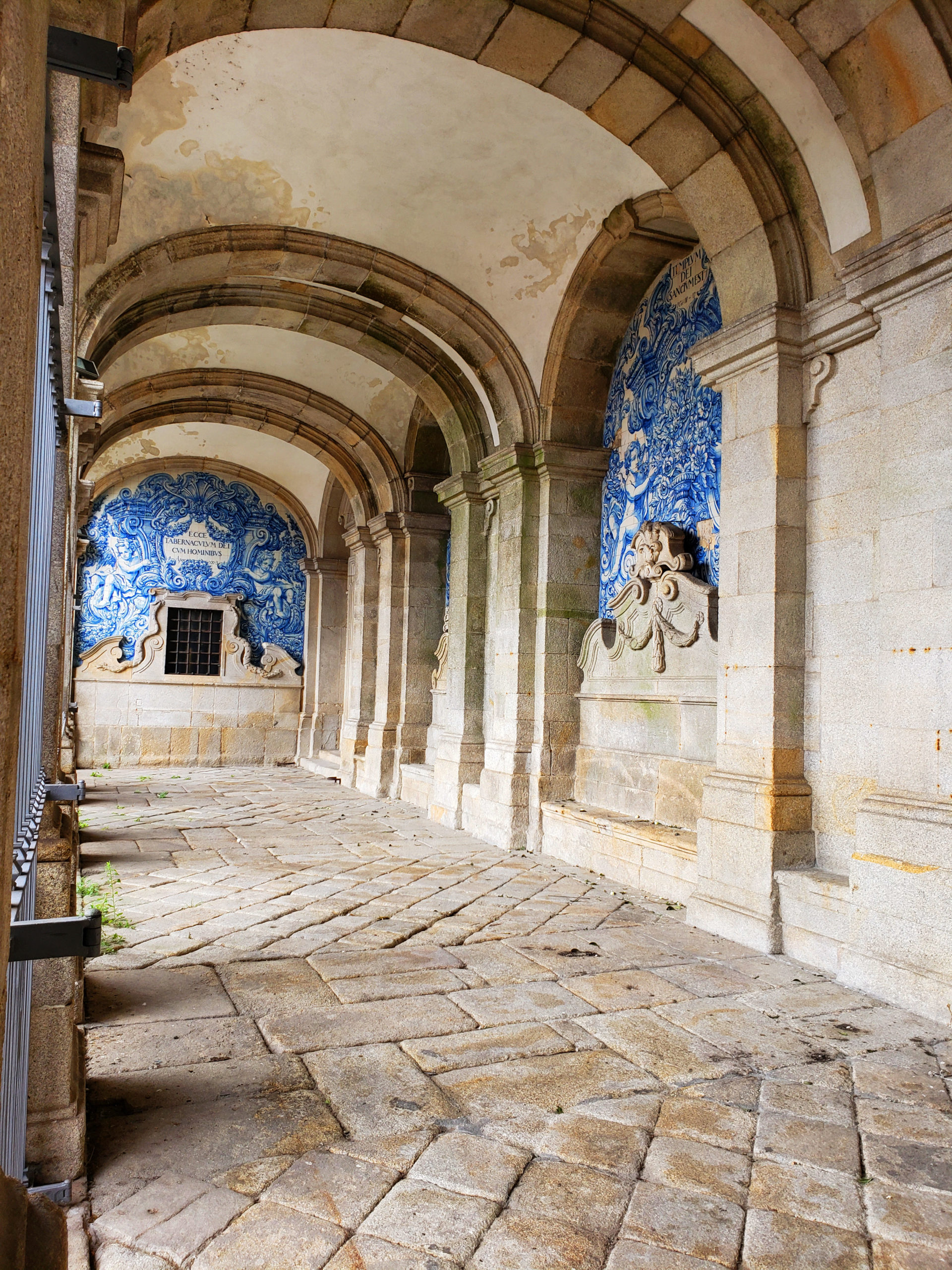
Check Out São Bento Train Station
Yes, I am suggesting that you visiting a train station as an attraction, but hear me out! This may look like a regular train station from the exterior, but the true attraction is the magnificent interior. São Bento Railway Station is located in the heart of Porto and is adorned with over 20,000 gorgeous azulejos tiles on the inside. It is also noted as a National Monument within Portugal and is a UNESCO World Heritage Site. Construction began in the early 1900’s and the station was completed in 1916. The soaring walls and ceiling are decorated with ornate crown moulding and various scenes of countryside living, battles and sieges from years gone by. Although São Bento Railway Station is a must see tourist attraction, keep in mind that it is still a busy and functioning train station and is the best launching point for a train trip to the Douro Valley. Note: you may leave with a sore neck from constantly glancing upwards at the beautiful details above. 😉
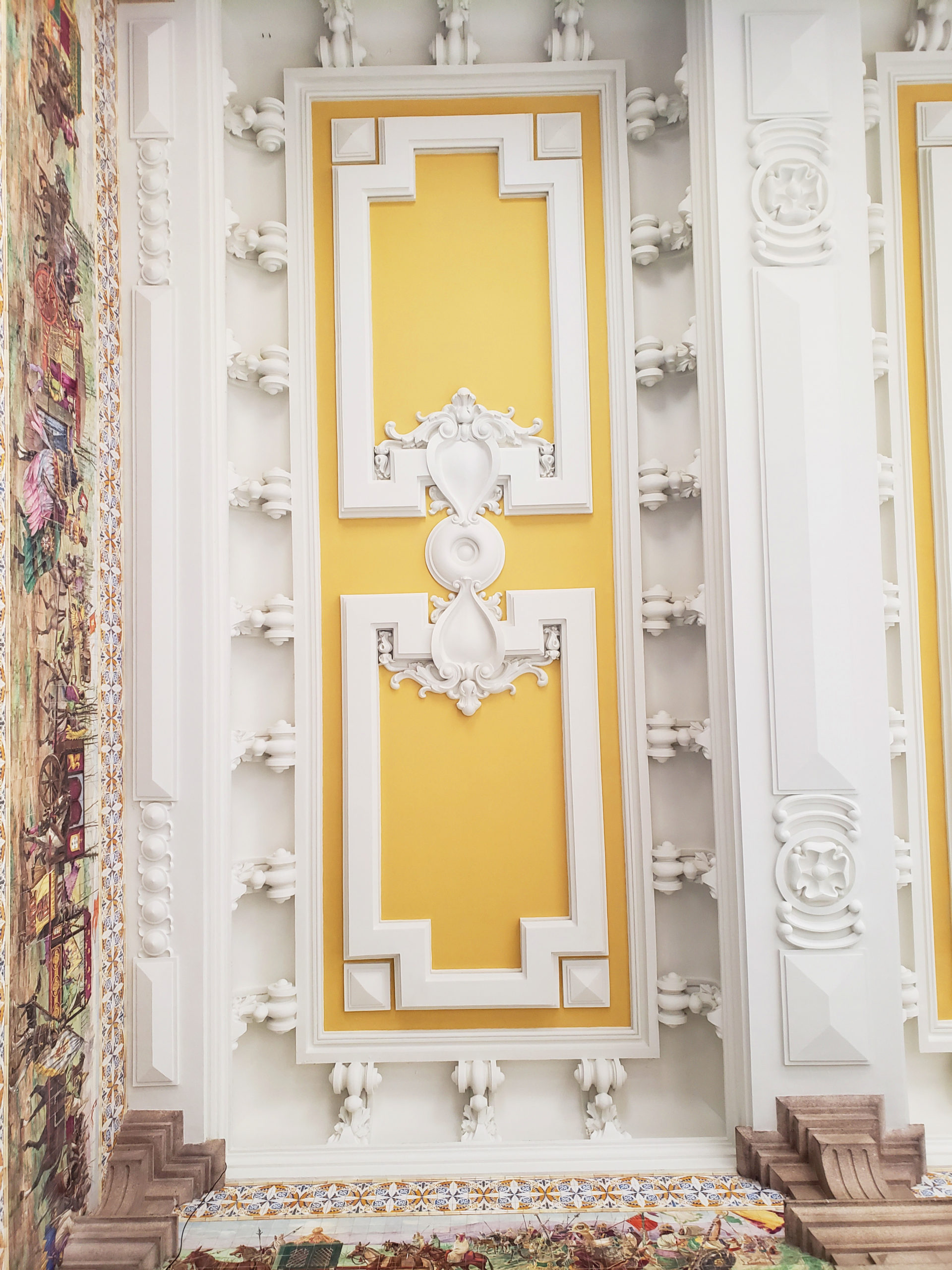
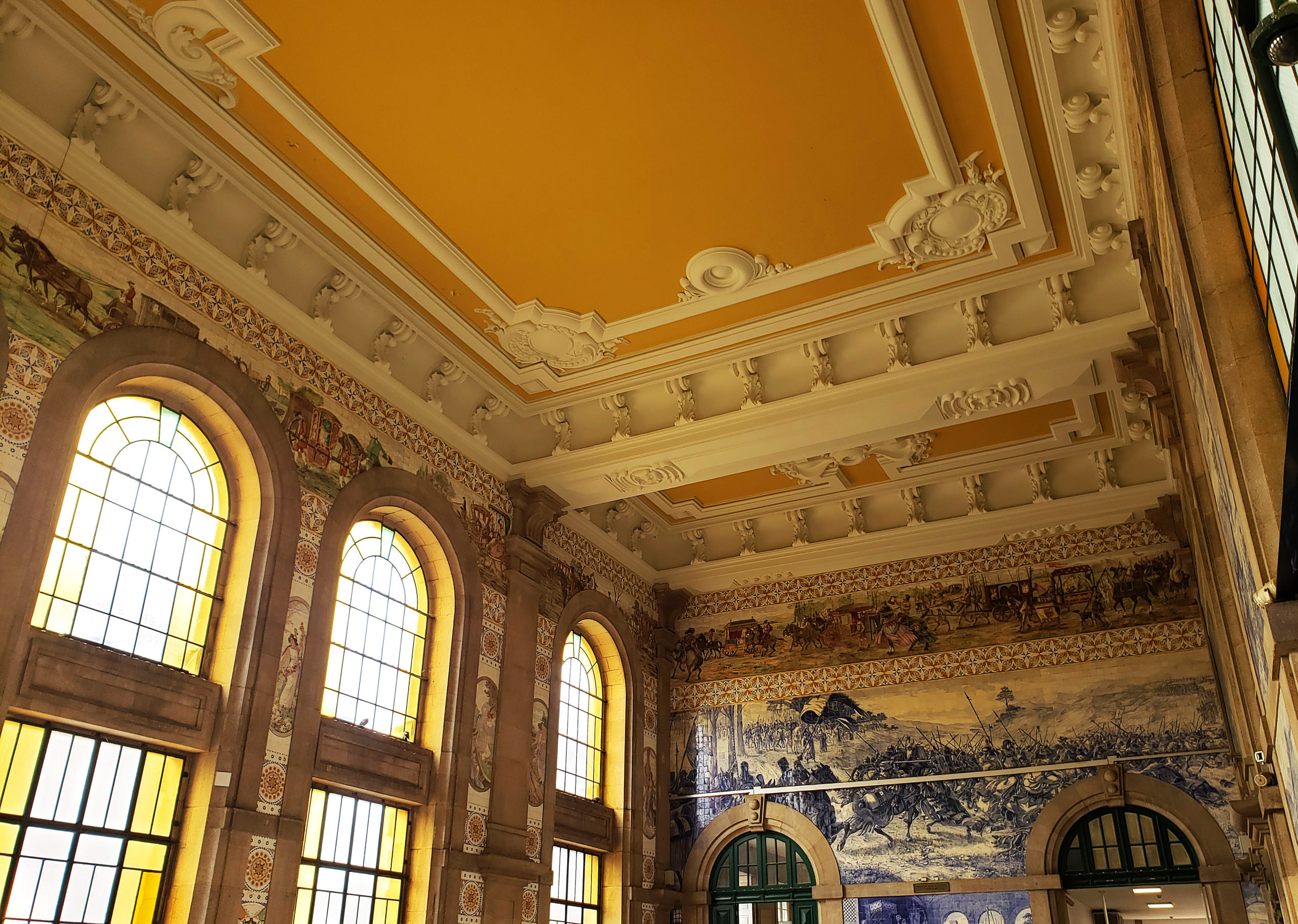

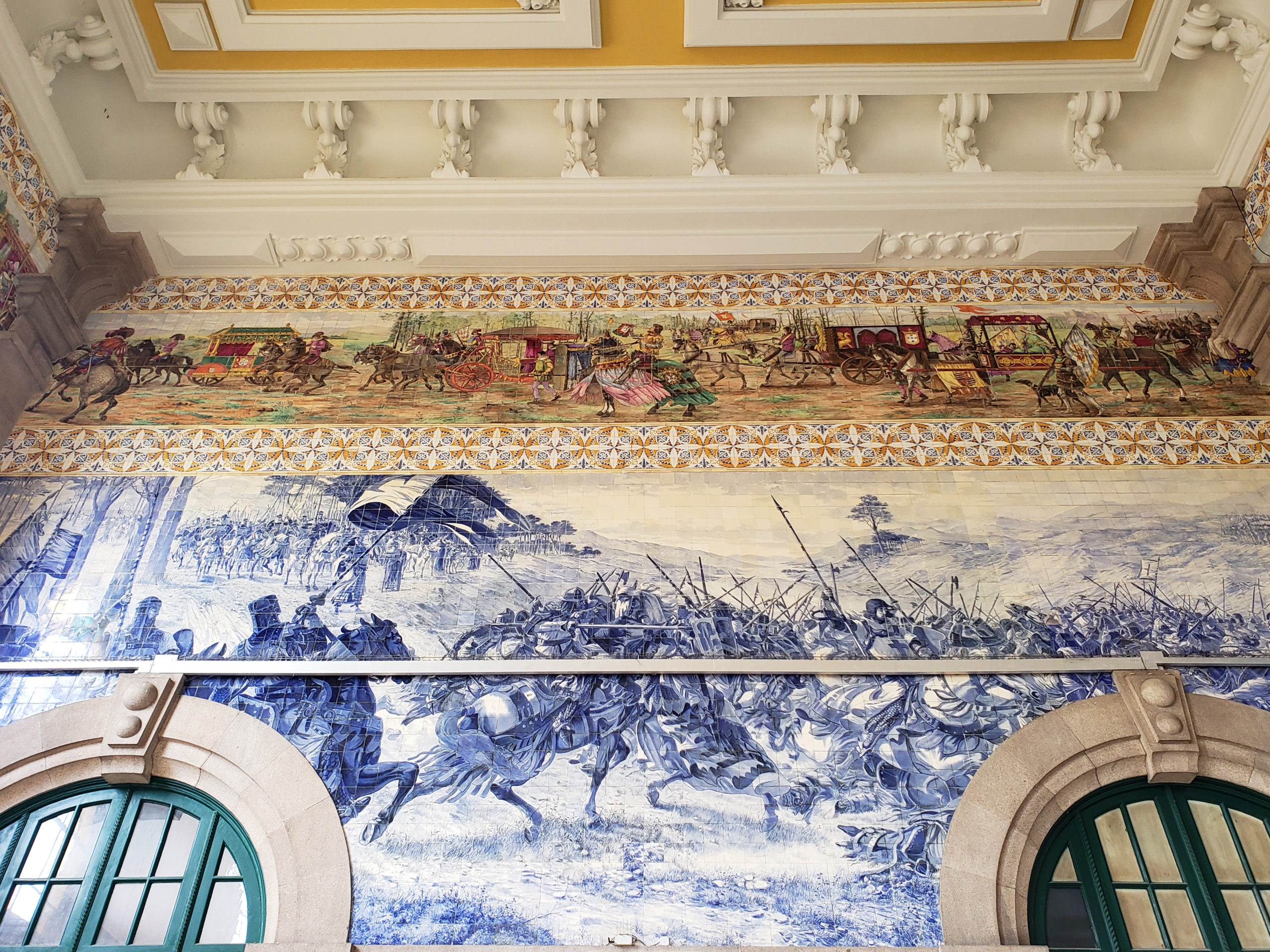
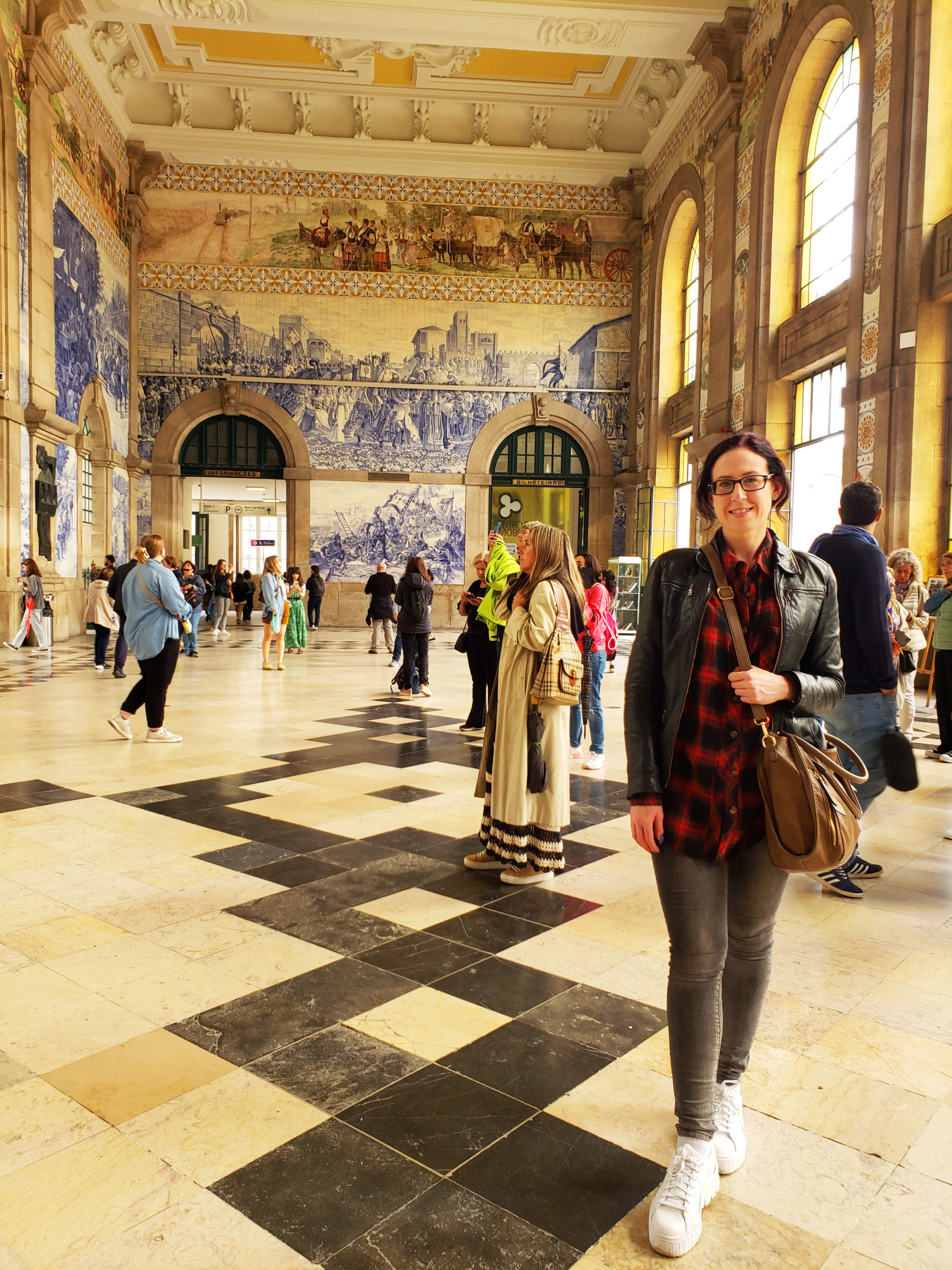
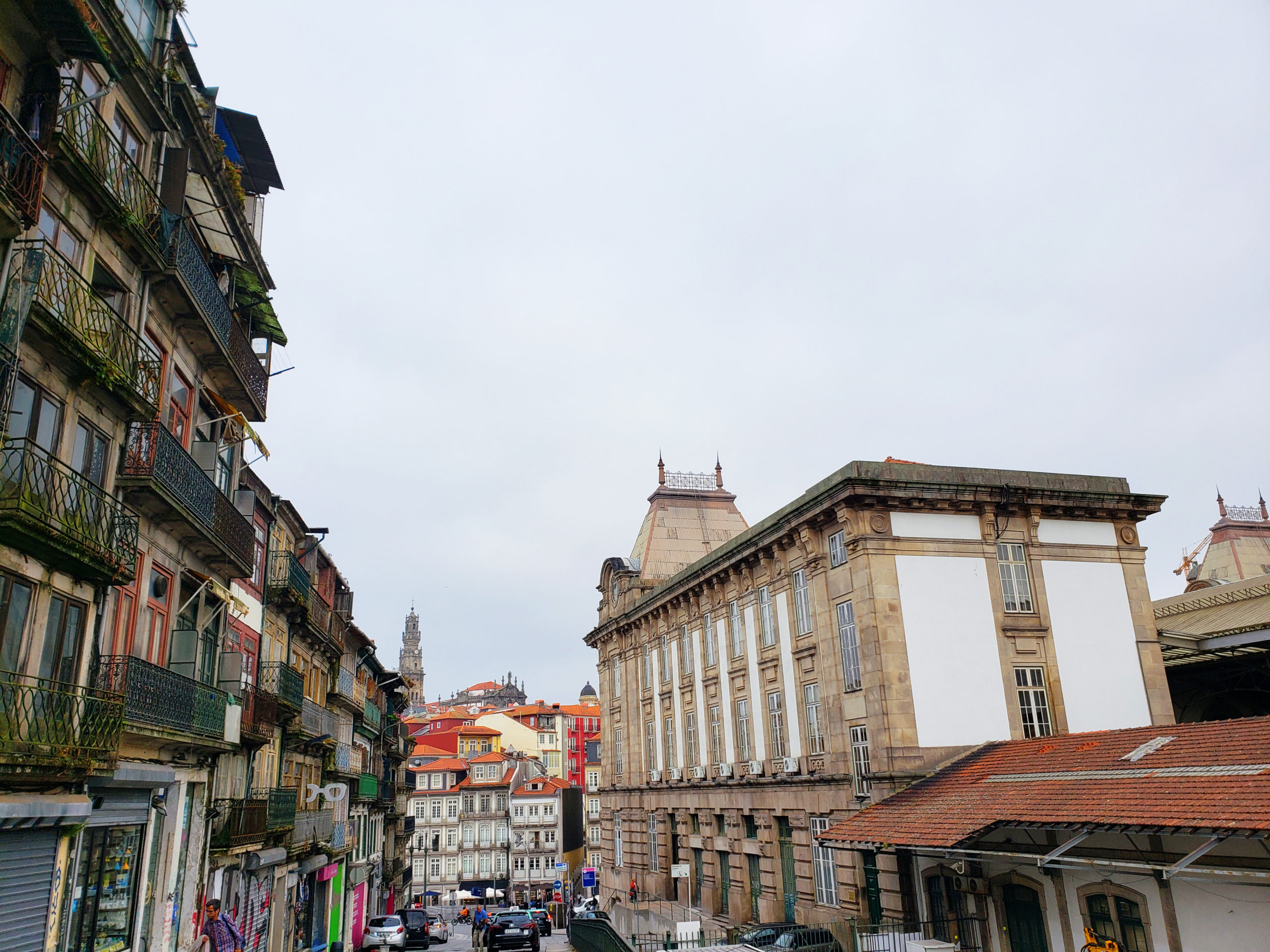

Take In All Of The Azulejos Tiles
My obsession with ornate and beautiful doorways may have found a heavy-weight contender for my new favourite thing to photograph; the azulejos tiles of Portugal. Azulejos are found on the interior and exterior of churches, palaces, ordinary houses, schools, restaurants, bars and even railways and subway stations. They are an ornamental art form, but also had a specific functional capacity like temperature control in homes during the heat of the summer months. These decorative tiles were first brought to Portugal by the Moors in the 8th century, but quickly became what Portugal is most famous for by the time the 16th century rolled around. So, grab your camera and have some fun trying to find all the different styles and designs of these colourful tiles dotted throughout Porto.
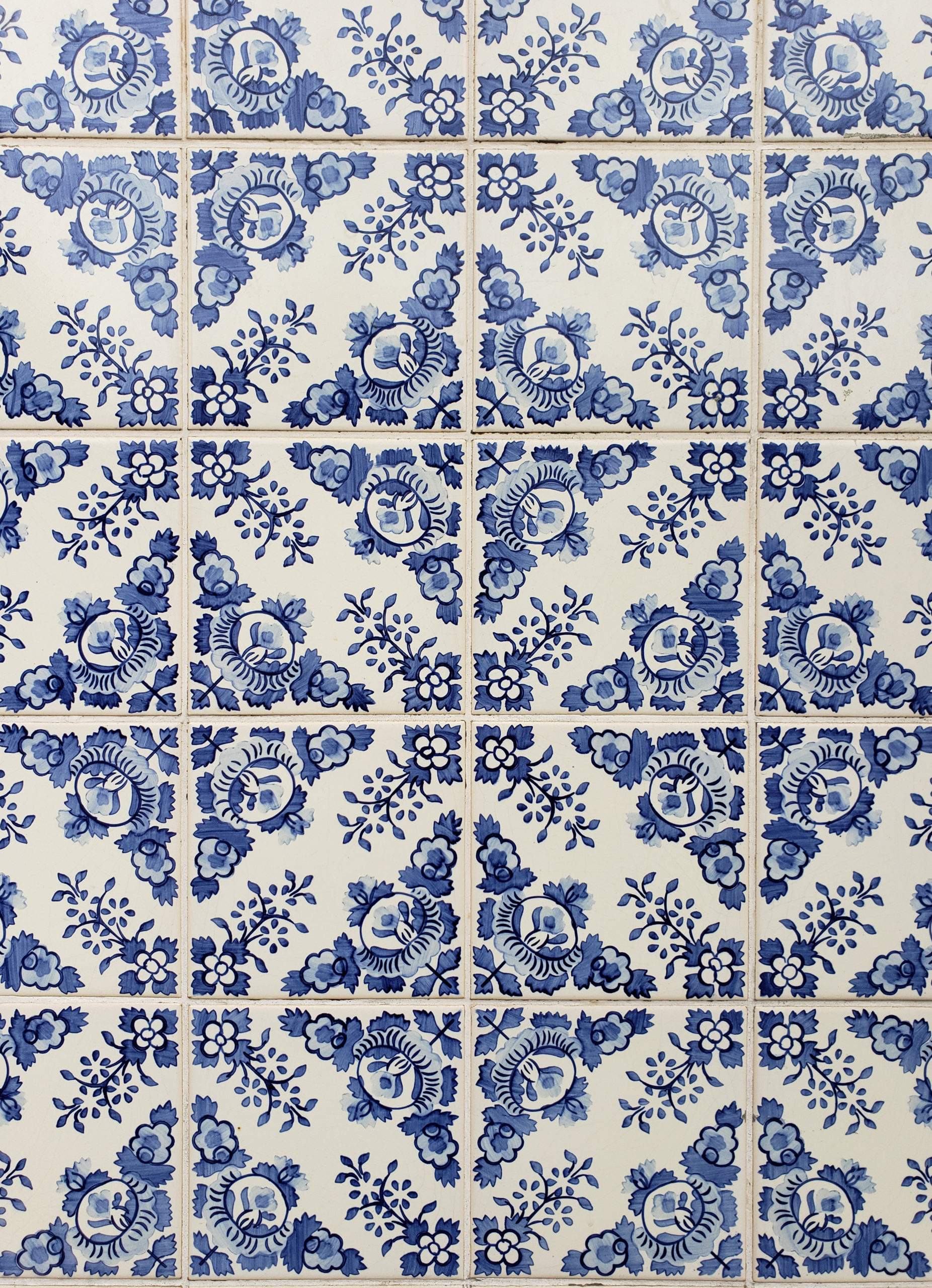
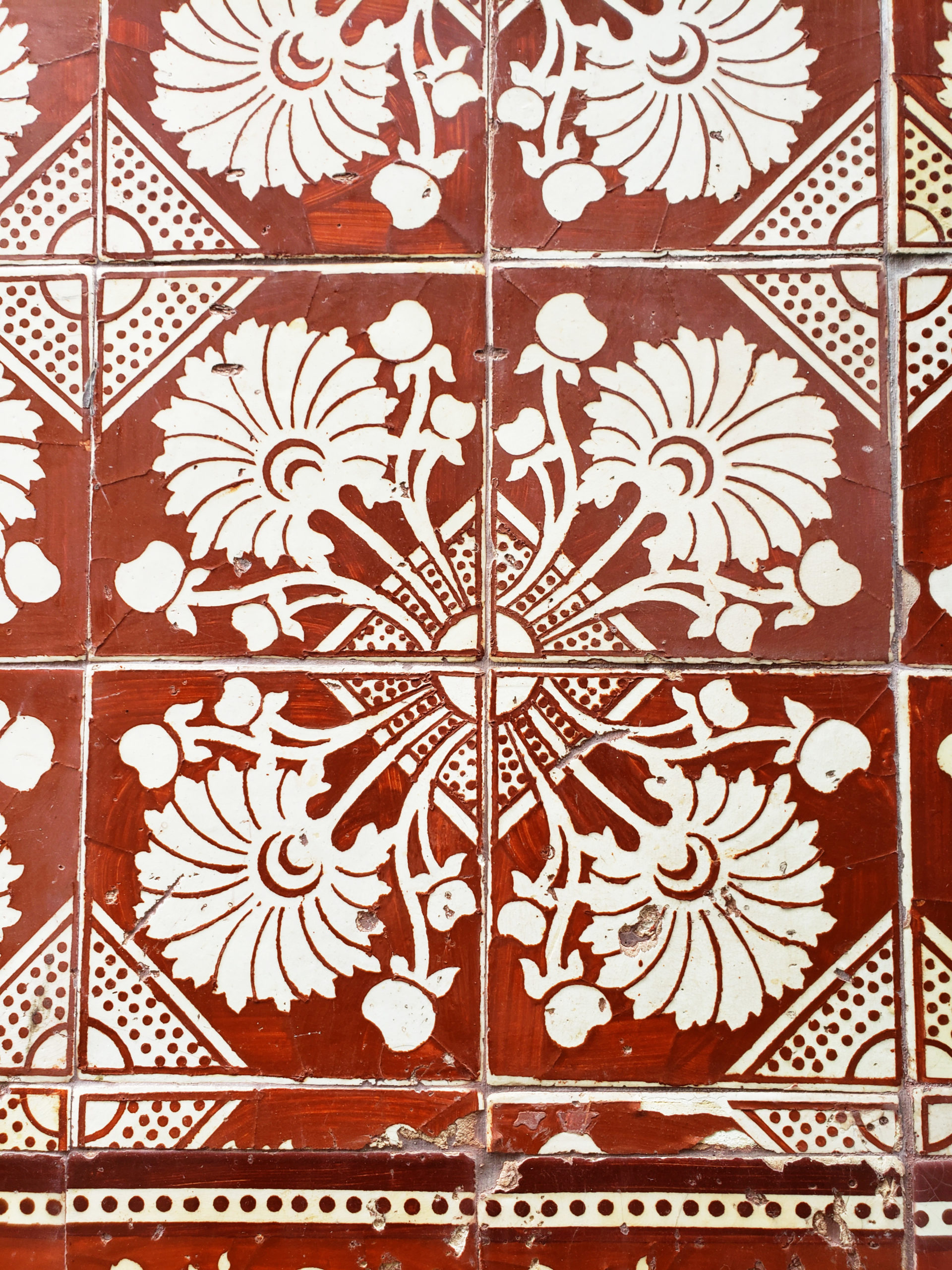



Teleférico de Gaia
Looking to score a unique view of Porto and the Douro River? Look no further than the Teleférico de Gaia. The Gaia Cable Car whisks you from one end of Vila Nova de Gaia to the next in just 5 minutes, but those 5 minutes are filled with sublime views unlike any other in Porto. If you’re feeling tired from climbing the steep streets of Porto all day long, this is a great way to reach the top of the city and feel relaxed while doing it. At the time of my visit, an Adult one way pass was 7€, but with the Porto City Card, you can save yourself 10%.
 Photo Source
Photo Source
Funicular dos Guindais
Want another method of fast and easy transportation that will save your precious legs from a hard upward climb? The Funicular Dos Guindais, is the fastest way to get to and from the Batalha (upper part of the centre) with the Ribeira (the river banks). The location of the Funicular Dos Guindais is situated in the same spot as the original funicular from 1891. Although the ride is only two minutes long, you are rewarded with epic views of the Dom Luis I Bridge and also shown a unique perspective of just how steep the rail line is. At a cost of 2.50€ for a one way ticket, you can save 25% by using your Porto City Card.

Mosteiro da Serra do Pilar
The Monastery of Serra do Pilar is a former 16th century monastery located in Vila Nova de Gaia. The monastery is situated on an outcrop overlooking the Dom Luís I Bridge and the historic centre of Porto. As impressive as the views are of the monastery itself, the dome can also be climbed for an even more magnificent view. For a special treat, make your way to the top of Dom Luis I Bridge at night to see the monastery fully lit up along the cityscape.
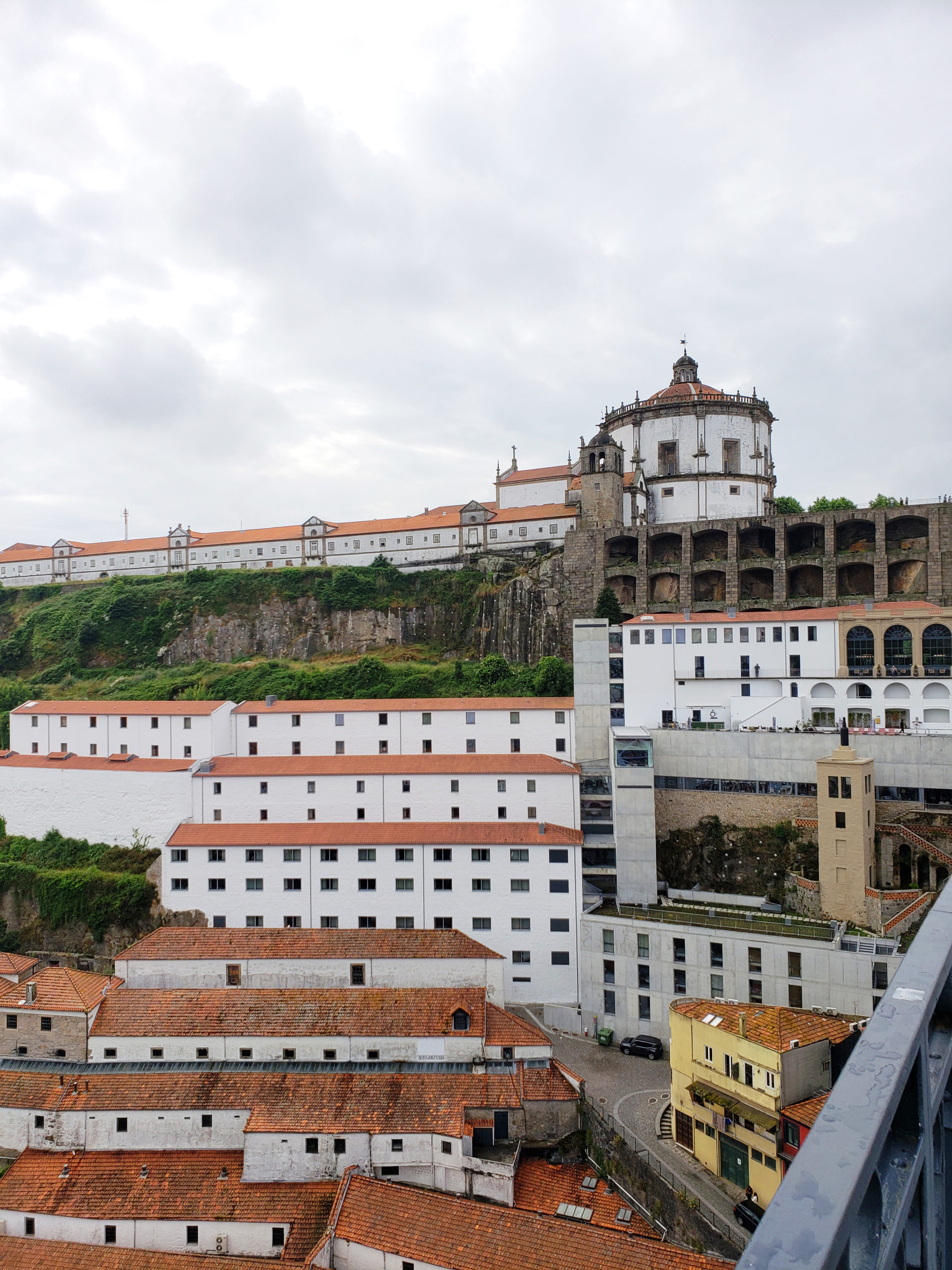

Igreja de Santo Ildefonso
The Igreja de Santo Ildefonso situated close to Batalha Square, dates back to the 18th century. This stunning church was completed in 1739 and includes a framed altarpiece by Italian architect, Nicolau Nasoni, who was also the main architect of the Torre dos Clérigos. Situated on a slight hill, the striking façade of over 11,000 classic blue and white azulejos tiles were added in 1932 by Jorge Colaço, that depict the life of Saint Ildefonso and stories from the Gospels. This is truly a site that cannot be skipped over.




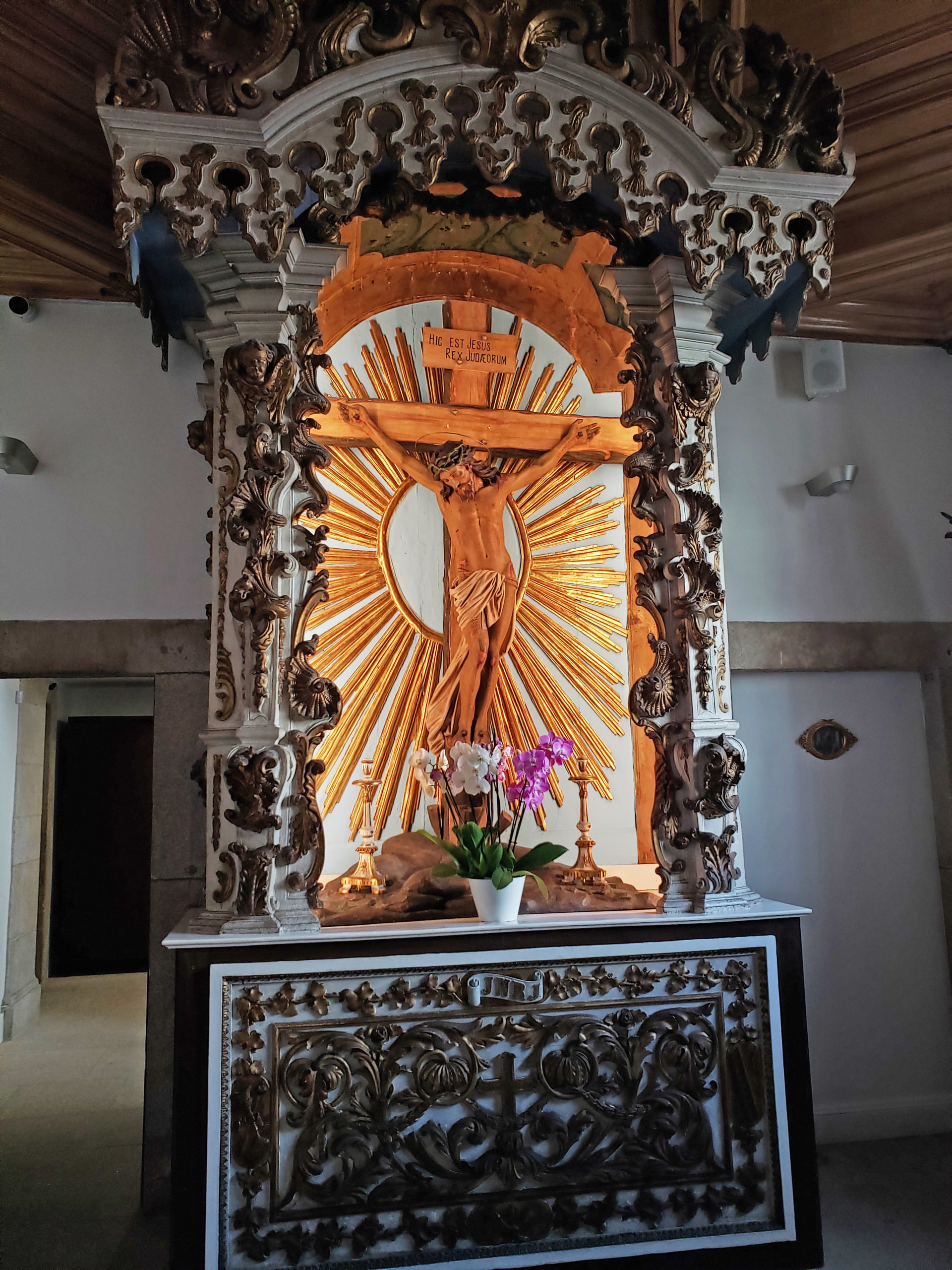
Capela das Almas (Chapel of Souls)
Located on Rua de Santa Catarina, one of Porto’s most prominent and busiest shopping streets, sits the dazzling Chapel of Souls. Upon laying your eyes on this wonderfully beautiful chapel, it’s no wonder why it is one of the most photographed churches in all of Porto. Covered in approximately 16,000 blue and white ceramic azulejos tiles (that remind me of the famous Dutch Delft tiles), the Chapel of Souls is a showstopping piece of architecture. Be sure to pop inside to have a look at the impressive alter as well.
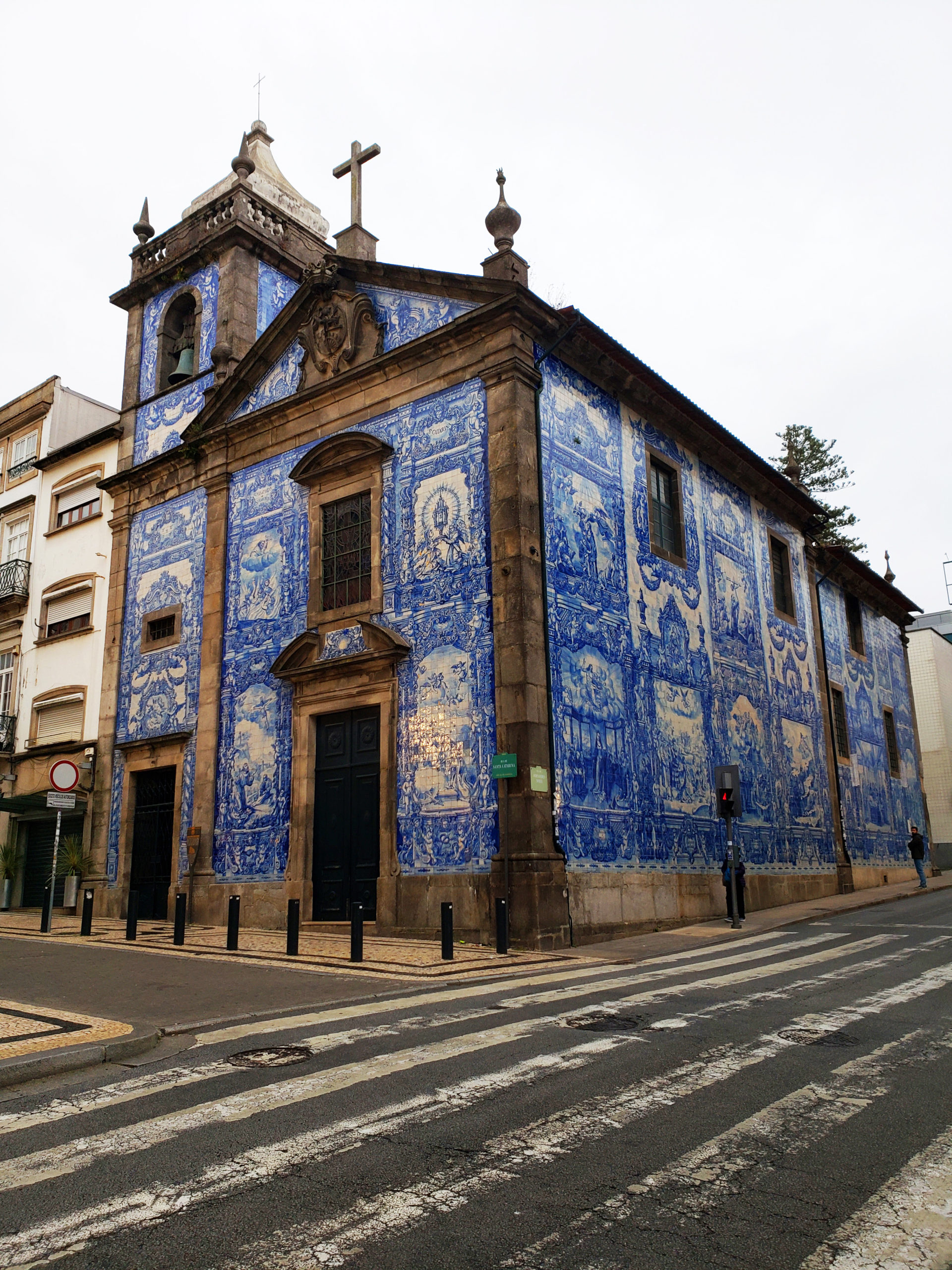


Channel Anthony Bourdain At Cervejaria Gazela
If anyone knew good food, combined with ambiance and a hit with both locals and tourists, it was the late and great Anthony Bourdain. This iconic, buzzing, no-frills snack bar is known for a unique hot dog called the cachorrinho and classic Portuguese sandwiches. The cachorrinho is served in a non-traditional sense of what you may think and picture a hot dog to be served like. The hot dog is served in a crusty bun, which is toasted like a panini and then cut into bite sized pieces all while being drenched in a hot sauce that is to die for. Served with french fries and of course, an ice cold beer, there’s nothing like it. Chances are high that you will have to wait in line to enter, as the space is very small and only seats about a dozen people at a time. Just know that it is worth it, but if you don’t want to wait, there is another location just across the street that serves the exact same item, but it’s not the one that Anthony ate at, which is the draw card to the smaller establishment.

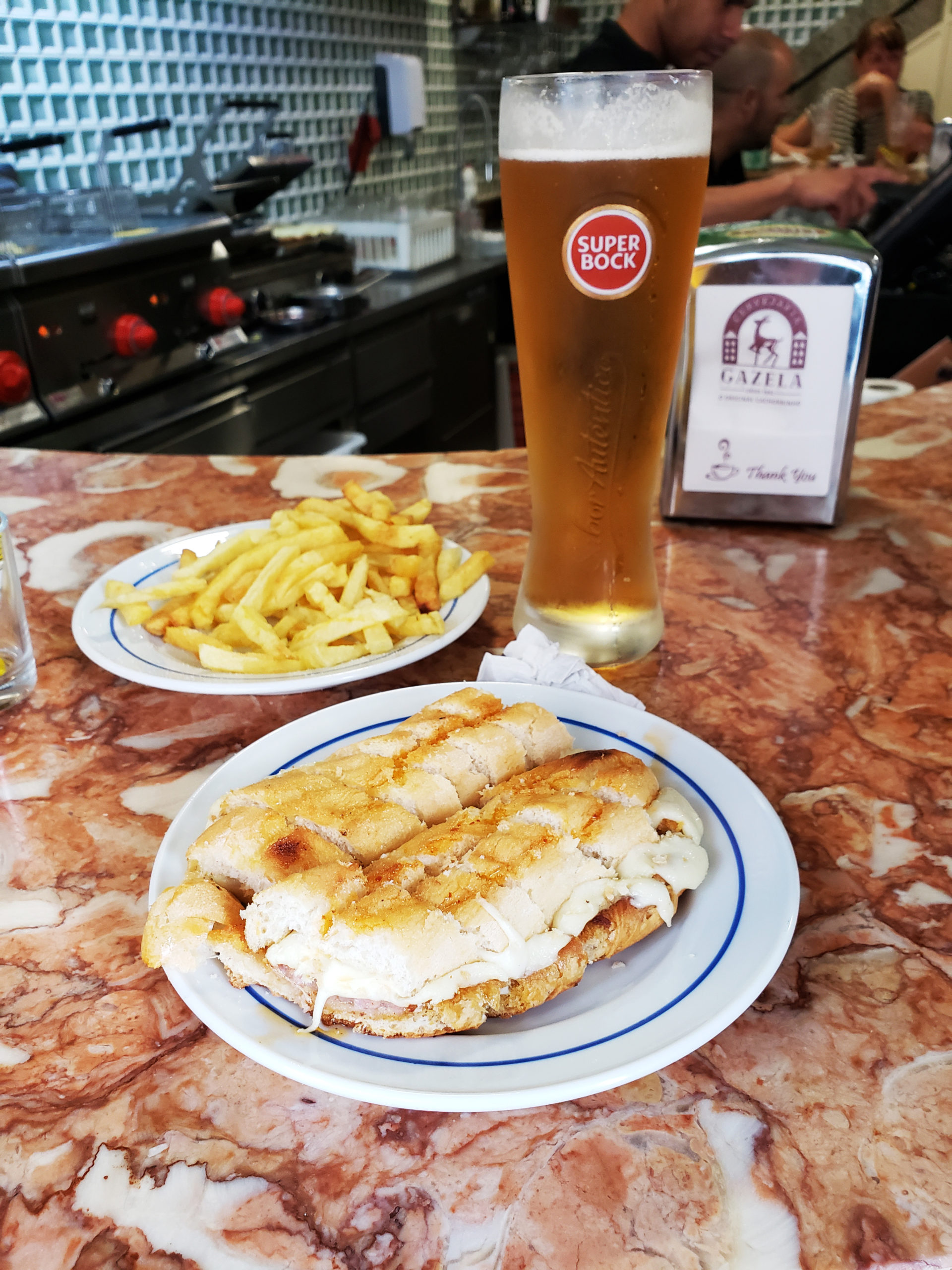
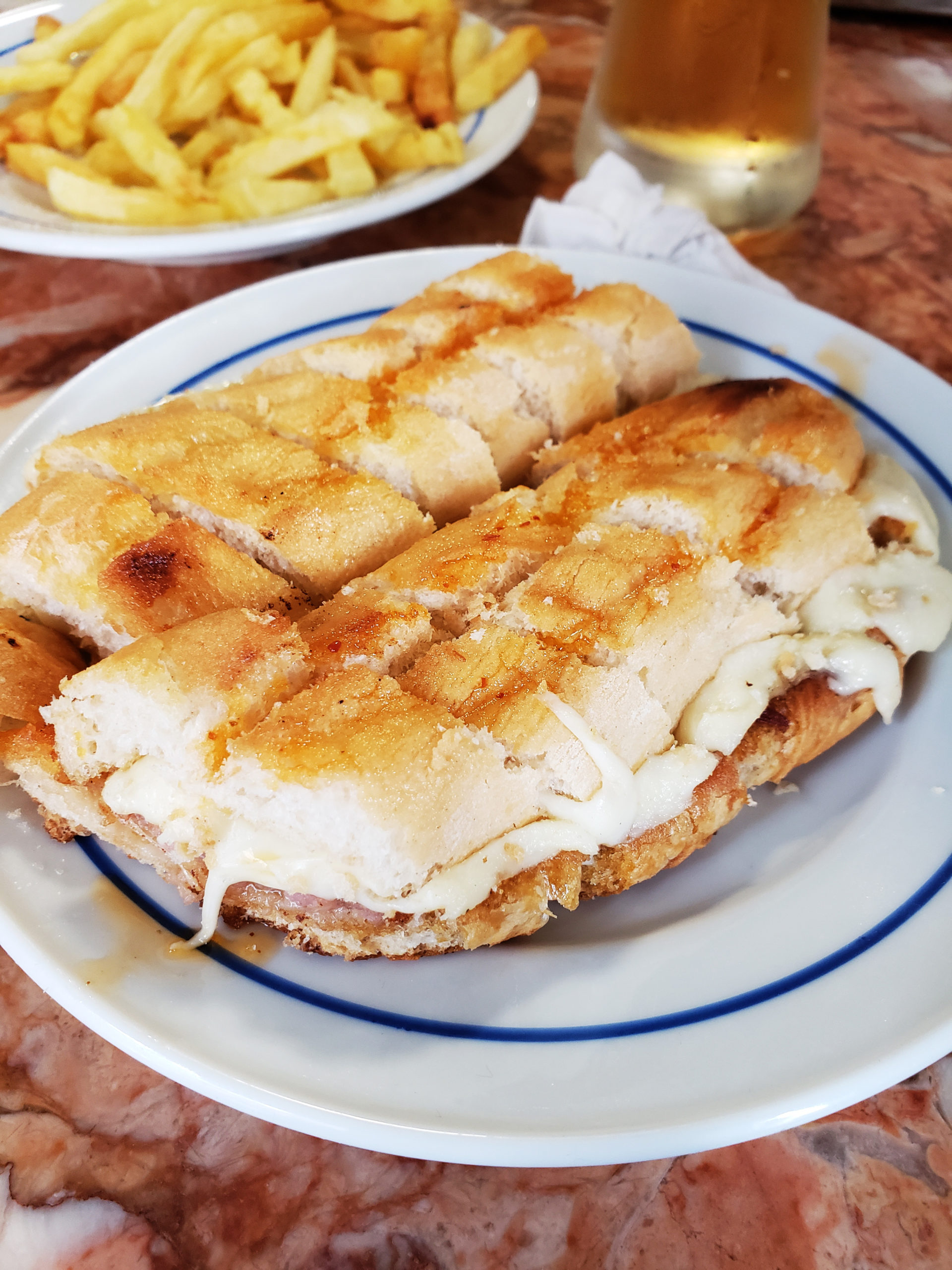

Where To Stay
Porto offers a wide range of accommodation choice that vary in cost and styles from cozy lofts to high end hotel chains. During the summer months, Portugal is a hot spot for travellers and even for weekend city breaks for Europeans making the cost soar higher during peak months. It is imperative to book your stay well in advance to avoid inflated costs during busy times. My visit to Porto was at the end of May, however, all of my accommodations were booked well beforehand in February to avoid ghastly price increases. I opted to stay outside of the historic city centre and situated myself about a 15 minute walk from all of the major sites and a 20 minute walk from Porto’s Campanhã station. Note that in most of Portugal’s major cities, you will be charged a tourist tax of 1-2€ per person per night.
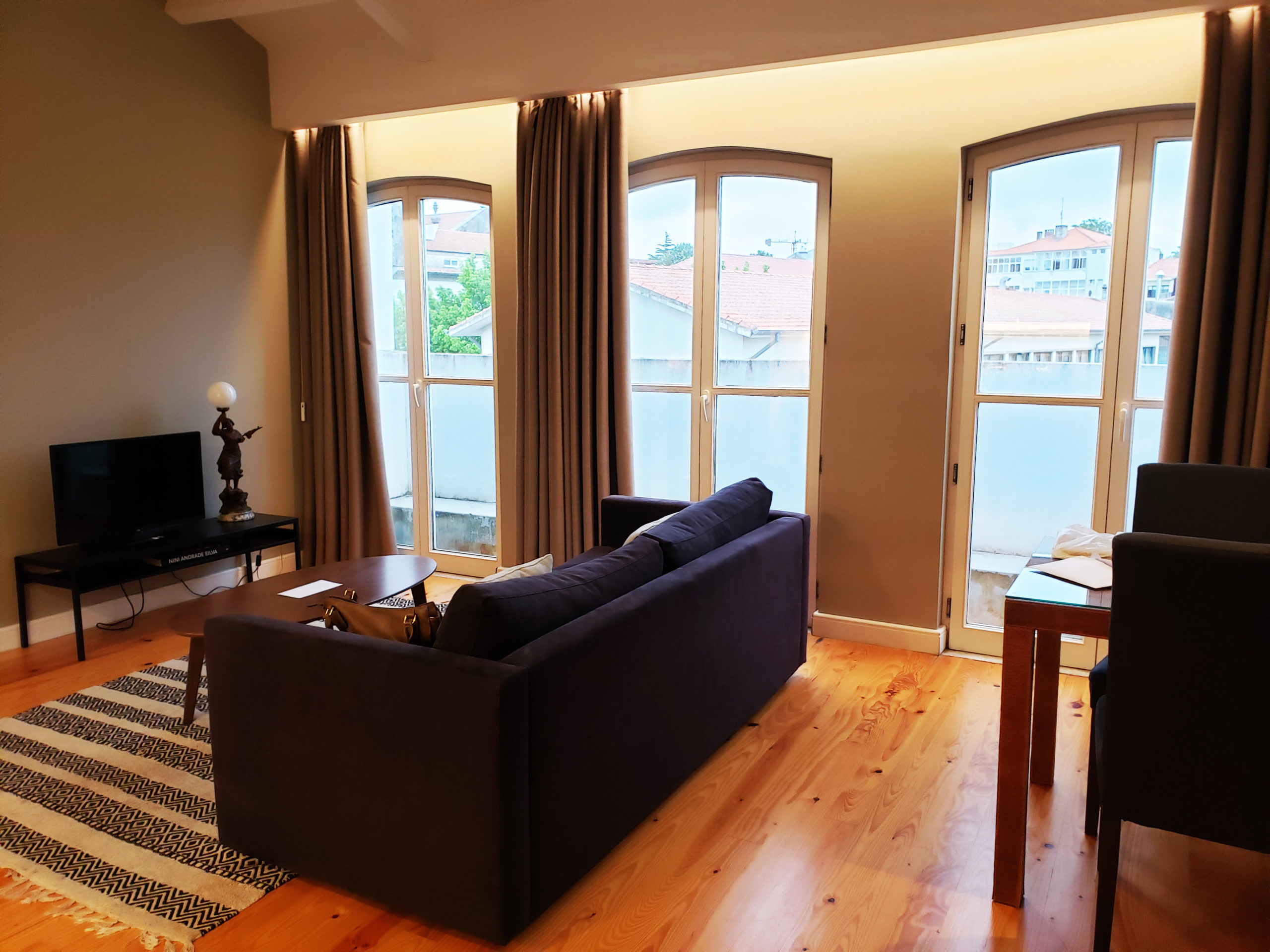


What To Eat
If you like to eat (and who doesn’t to be real), then Portugal is calling all of you foodies to come and visit. Every area of Portugal has its own distinct variation of dishes, delicacies and spices that will excite your taste buds, no matter what you’re into. Although Portuguese food is known to be very heavy on the meat, which isn’t a bad thing for me, but all the veggies and vegans may find a harder time, but I’m pretty sure that has changed over the years. Porto and the North of Portugal in general, is known for hearty and filling meals that are mostly dominated by grilled meats…ummm hello Francesinha! Here are a few places that I ate at that I can definitely recommend you to visit during your stay in Porto.
The Coffee House: Grab an artisan coffee, or a double espresso here and pull up a seat within the beautiful interior. Make sure to grab a pastéis de nata (or two) at Manteigaria, which is located inside The Coffee House.

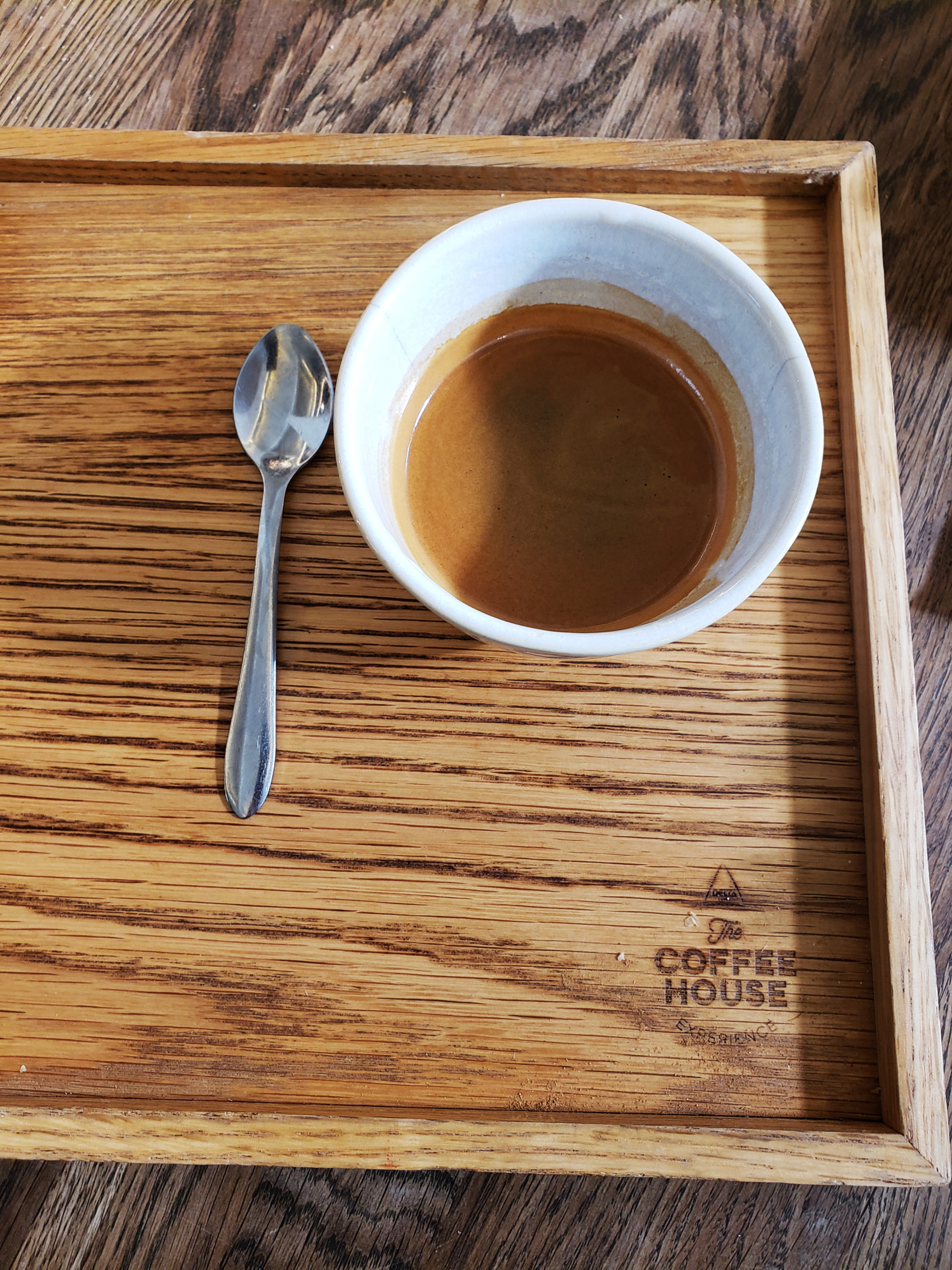
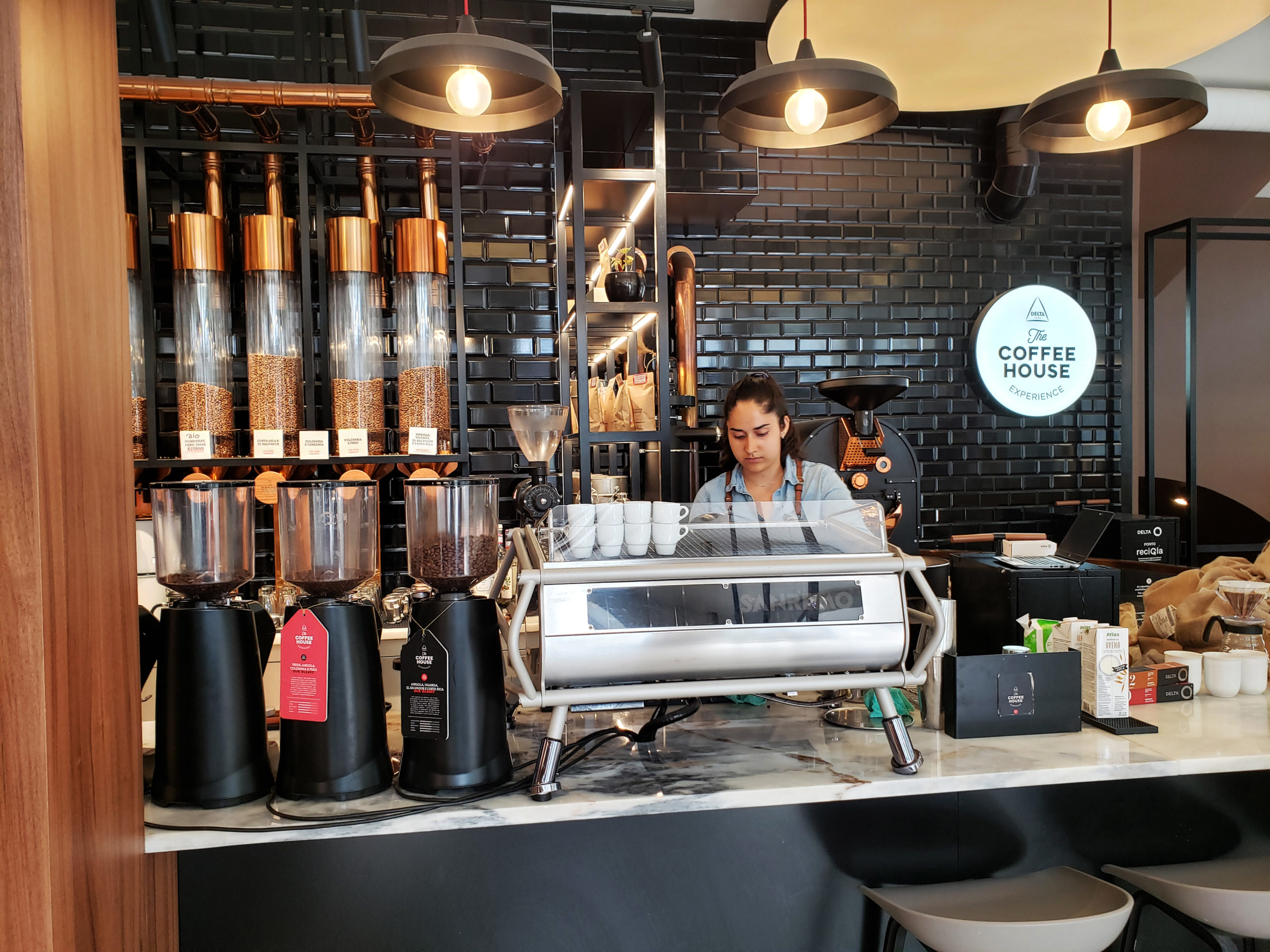
Casa Guedes Tradicional: Grab a traditional sandwich at a low cost at this Porto staple snack bar. I opted for a roasted pork and soft sheep cheese sandwich on a delicious crusty bun, which I then added mustard too. I also added an order of Batatas Fritas às Rodelas, or “chips” and let me tell you…heaven on a plate.
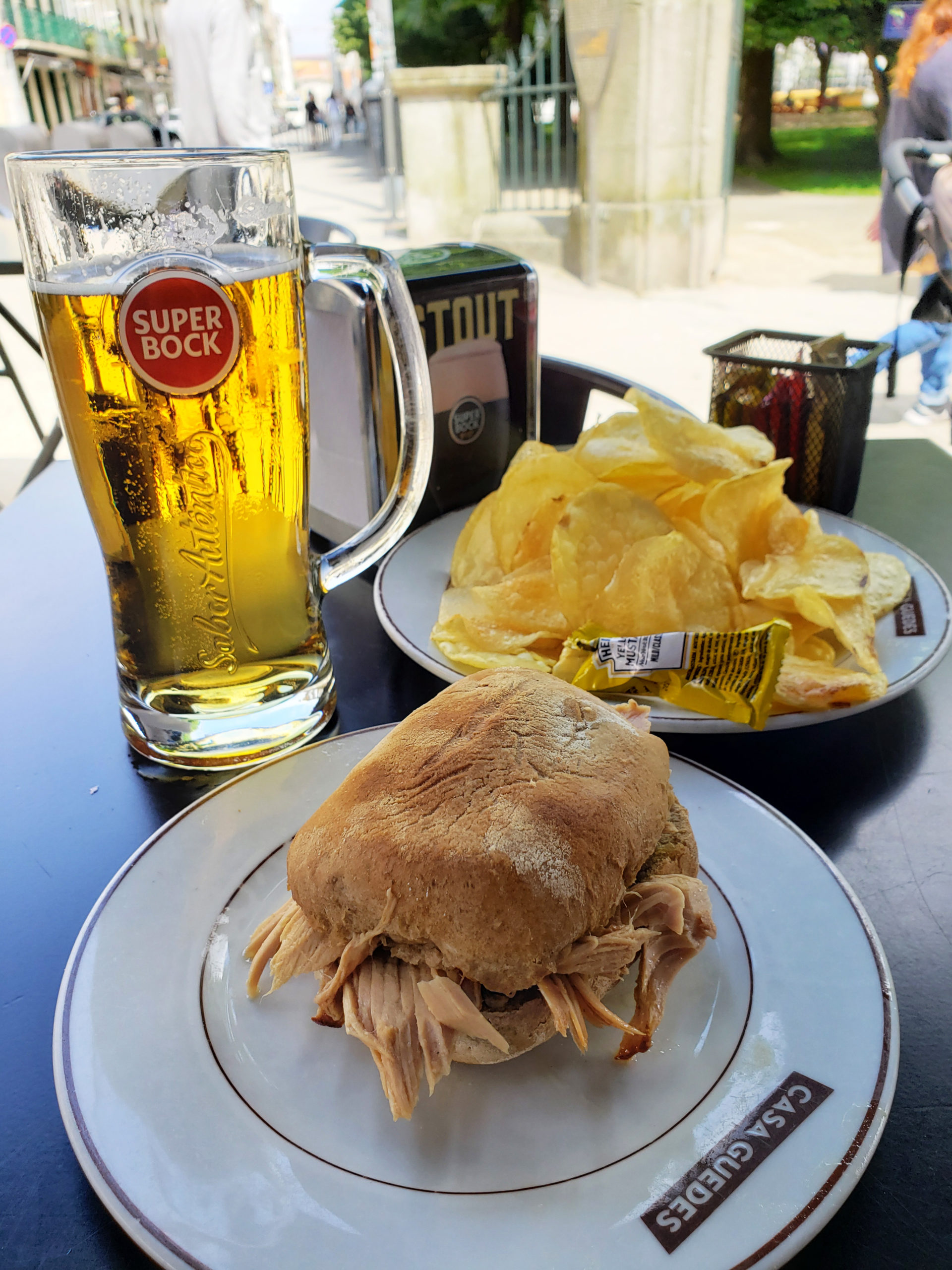
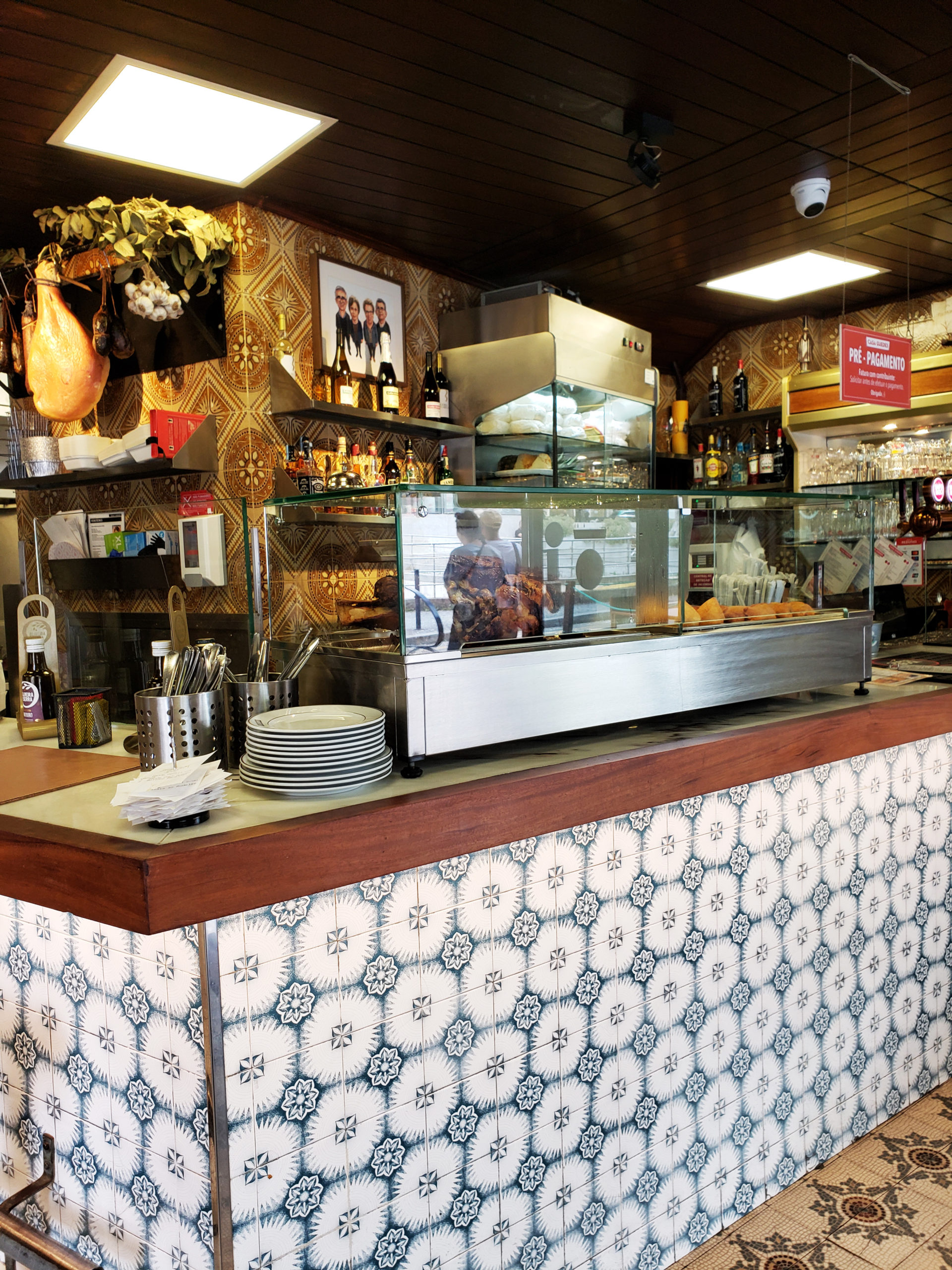
Restaurante Madureira: Just outside of the city centre, you’ll find Restaurante Madureira, which seemed to have more locals than tourists. I ordered a half version of the famous Francesinha. What is a Francesinha, you ask? The Francesinha is a sandwich type of dish that is served on a plate and covered in ooey gooey cheese and doused in a spicy tomato beer sauce that is to die for. The recipe uses thick slices of white bread with ham, sausage and steak shoved inside. You can also get a fried egg on top and it is taken to the oven to melt into a delicious hearty dish that will leave you full for hours. And if that wasn’t enough, it is served alongside a plate of french fries that are to be dipped in the sauce. I ordered a half sized portion and it was more than enough.

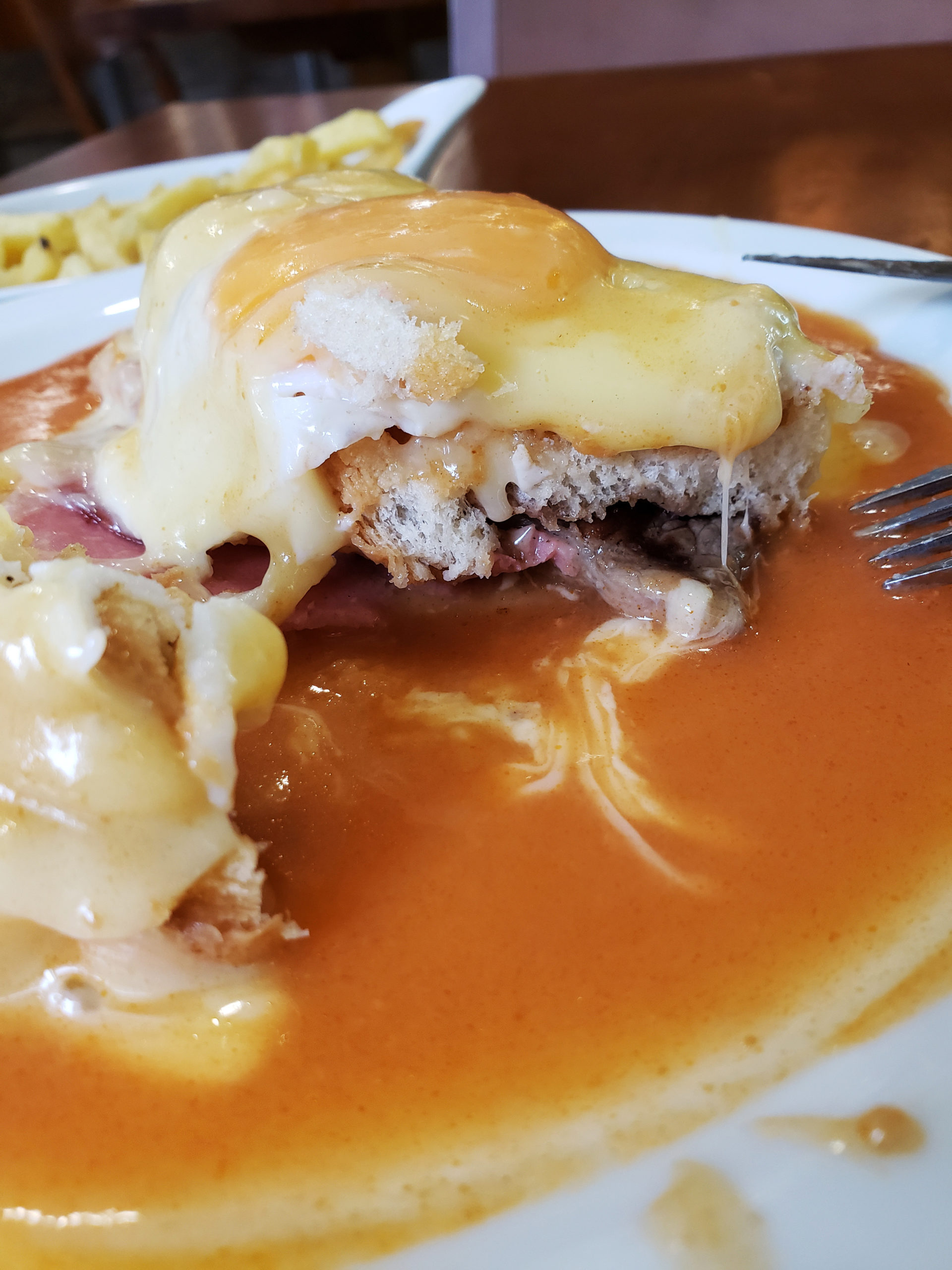
BEHER Porto: Looking for a cheap and delicious sandwich (can you tell Porto had a food theme going on?) that will surely have you talking about it for days to come? Look no further than BEHER Porto. One of the best Iberian ham sandwiches I’ve ever sunk my teeth into was here and I wish I could relive every single tasty bite. Go here. You won’t be disappointed.

Jimão Tapas e Vinhos: If you are searching around for a more romantic dinner ambiance in the heart of the narrow streets of the Ribeira District, then head to Jimao Tapas e Vinhos. Situated right off the main square and down a small alley, I stumbled upon this place by accident and was glad I did. They were super accommodating (probably because I was alone), since everyone that came after me was turned away, as they were booked solid for the next TWO NIGHTS! Crazy! If you go, book early! You’ll be absolutely blown away by the food, the presentation, the staff and the overall vibe of this location. I ordered the three mushroom risotto and was so happy with it. The dish was incredible!
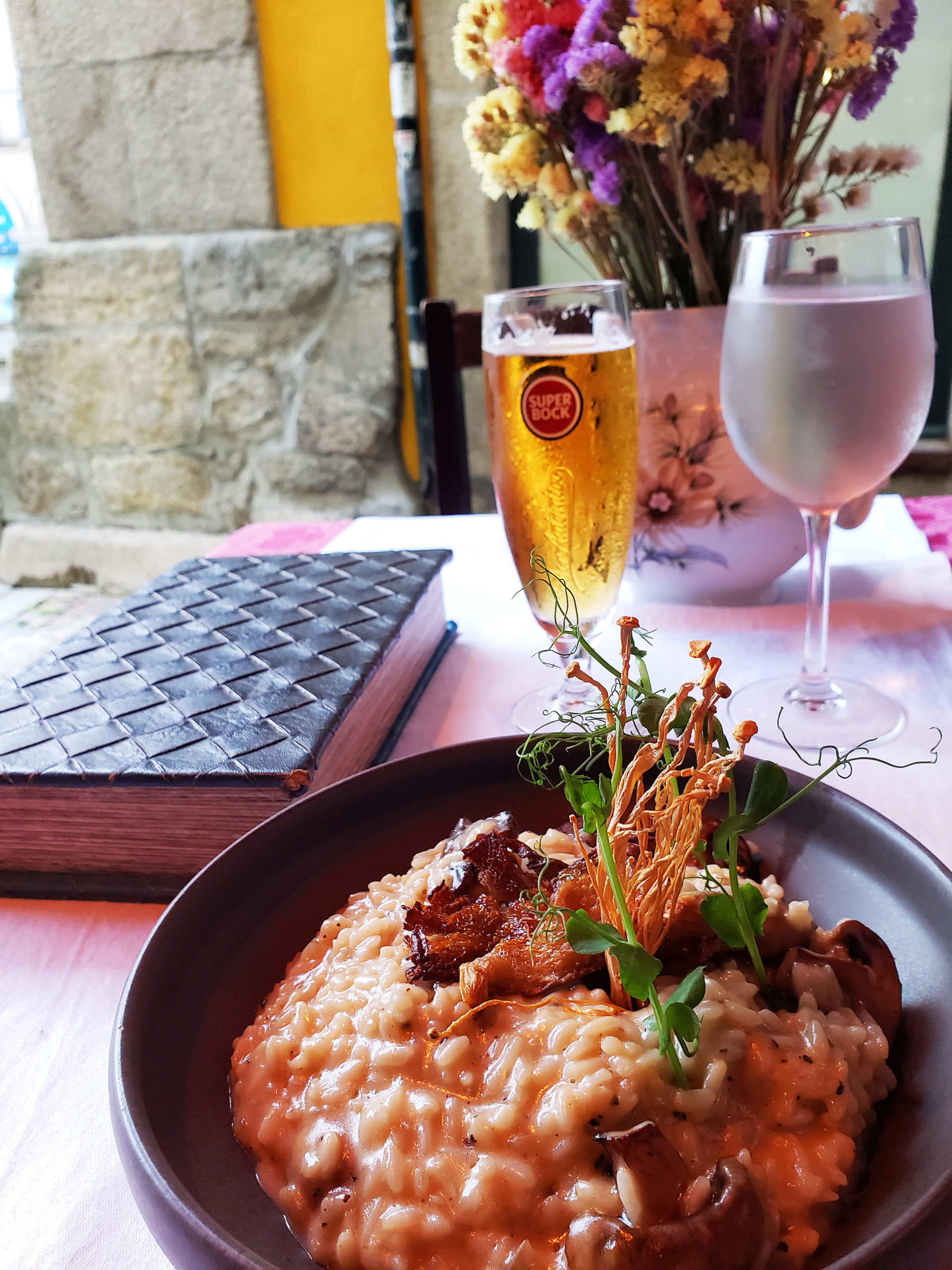
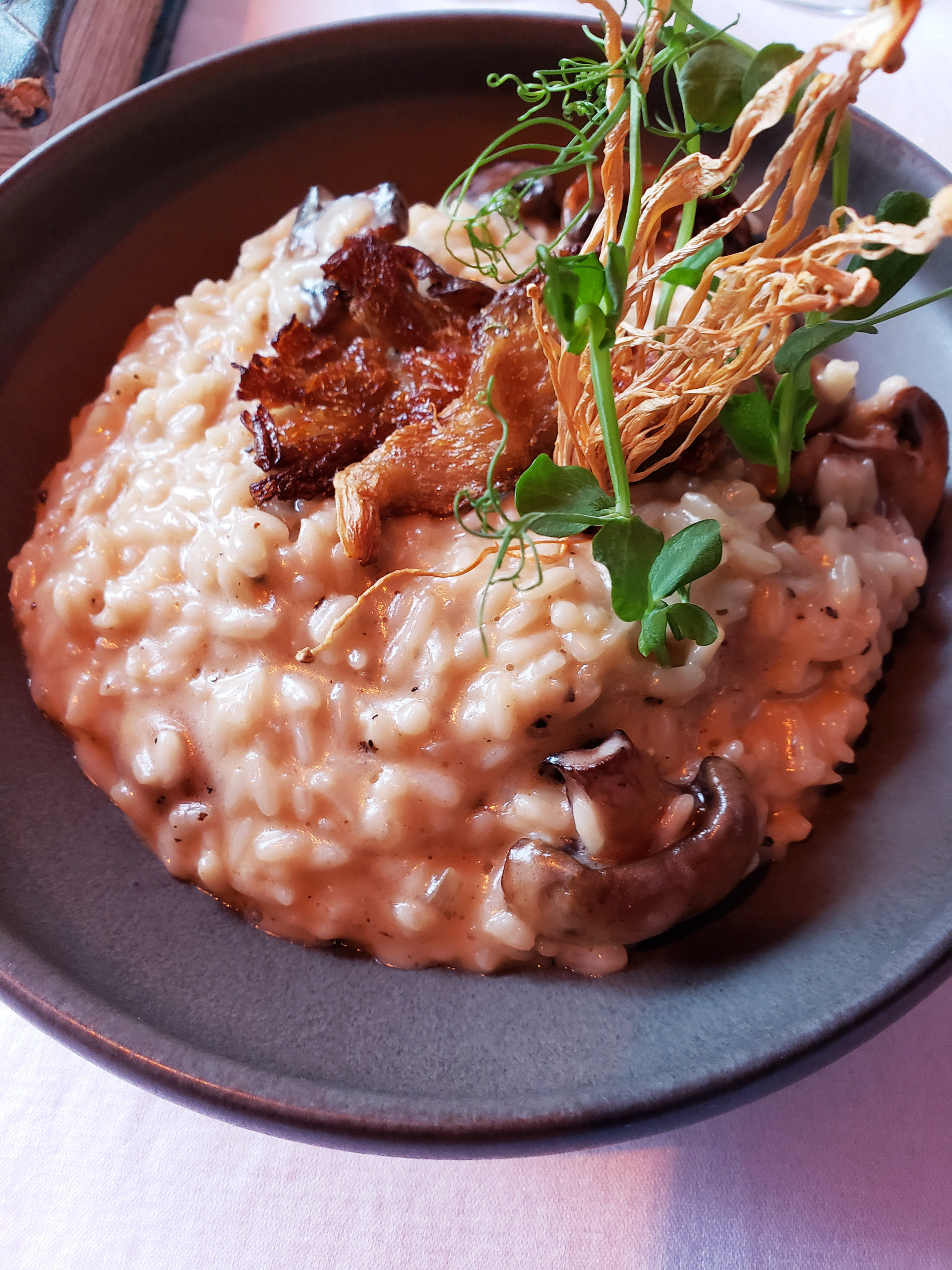
Whether you want to spend your time in Porto indulging on culinary delights, trying every variation of Port wine, walking aimlessly through the historic streets, or gawking at the gorgeous chapels covered in azulejos tiles, you won’t be stuck with nothing to do, or see in Porto. In a city that has so much to offer its visitors, it can be daunting figuring out what to see first. I hope this blog post was able to provide you some inspiration for your next trip to Porto.
Have you guys ever been to Porto? If you have, how did you spend your time there? Have any favourite spots you want to share with others? Tell me in the comments below! xo
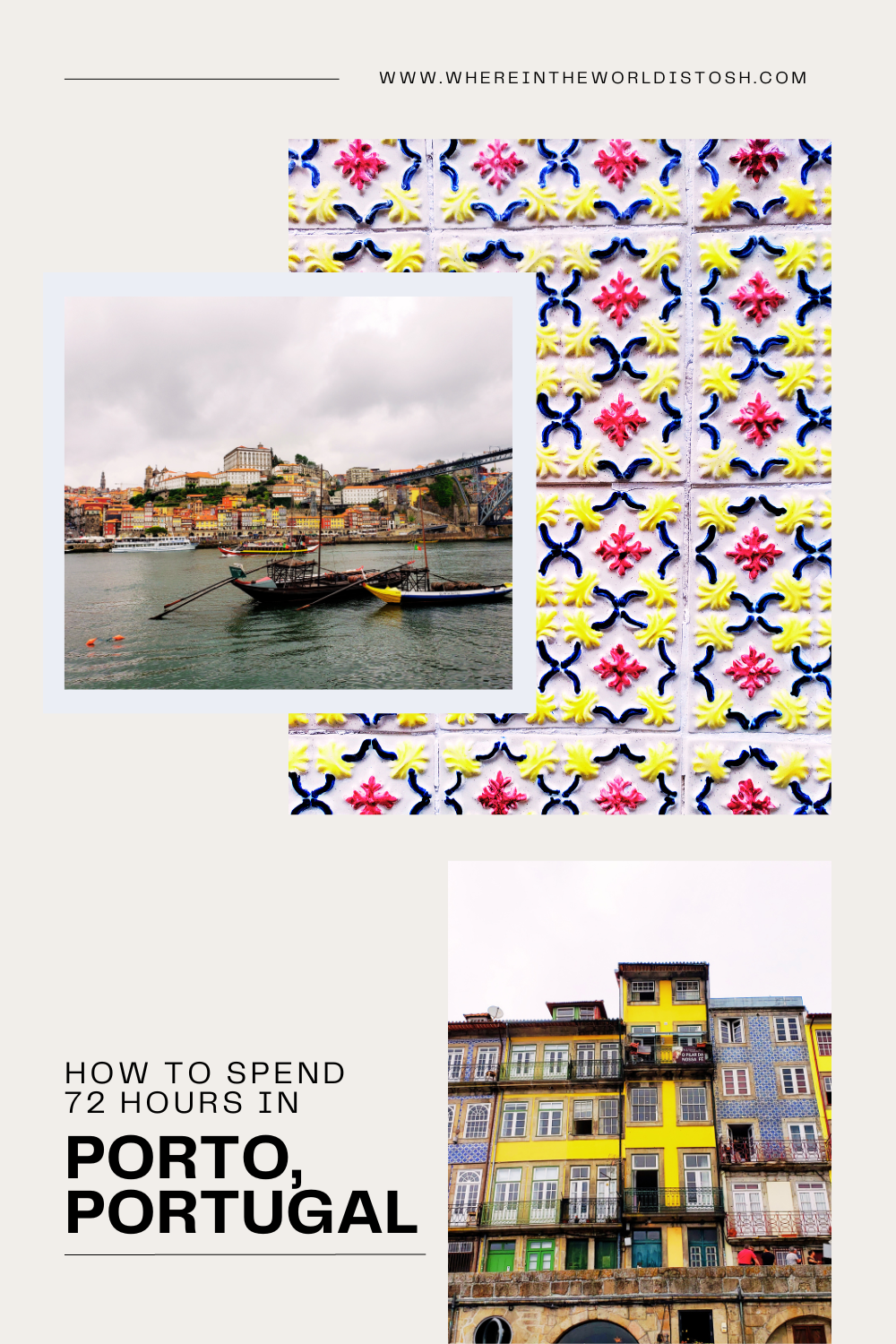
Let's get social!

